How to Eat Your Way Through Ho Chi Minh (Saigon) Like a Local
The best food in Saigon, Vietnam
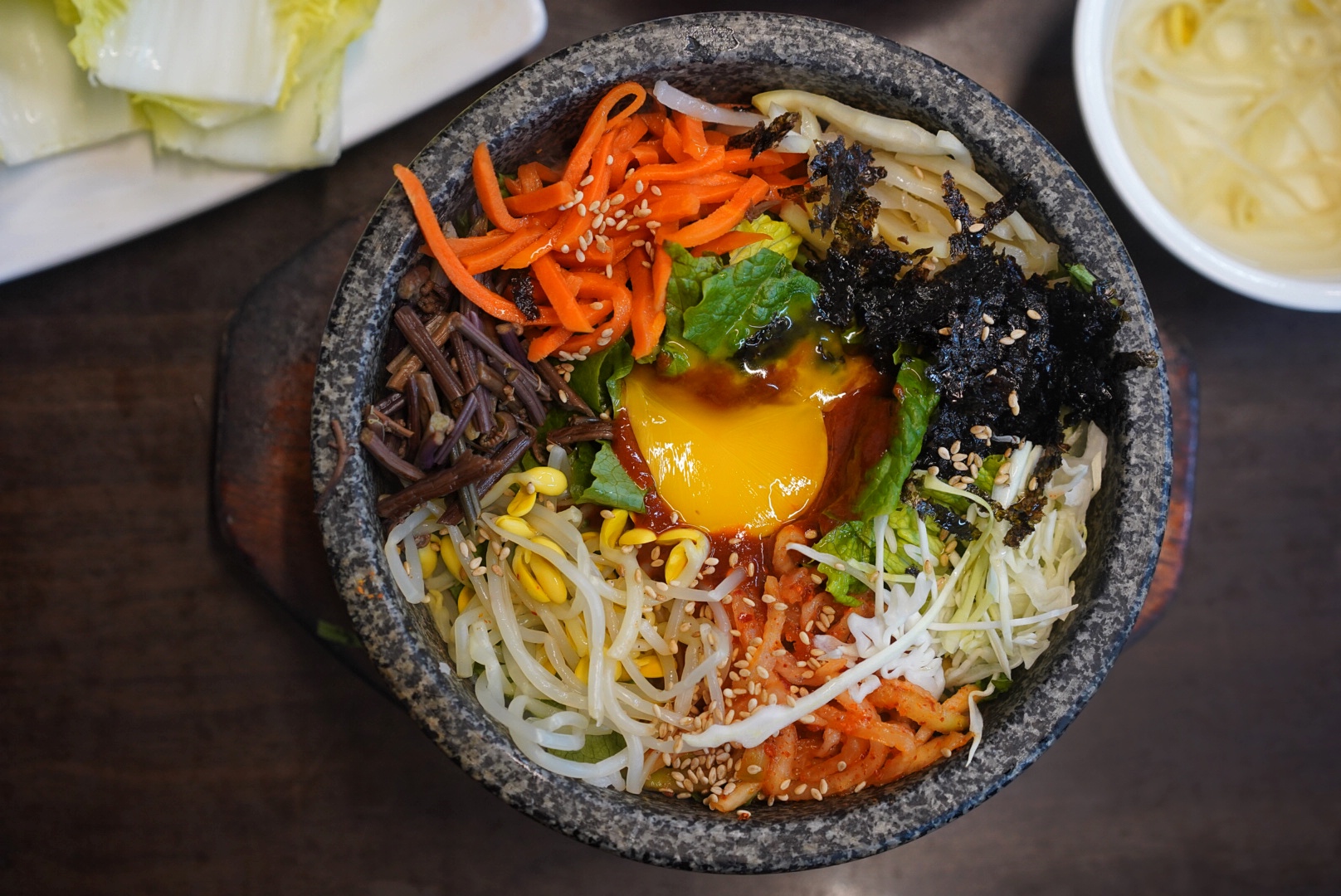
October 28, 2025
Updated October 29, 2025
Seoul is the capital and largest city of South Korea, serving as its cultural, economic, and political center. Located on the Han River, it's a bustling metropolis that blends ancient palaces and temples with modern skyscrapers and technology. The city is known for its mix of traditional history and cutting-edge culture, including a leading role in K-pop and global entertainment.
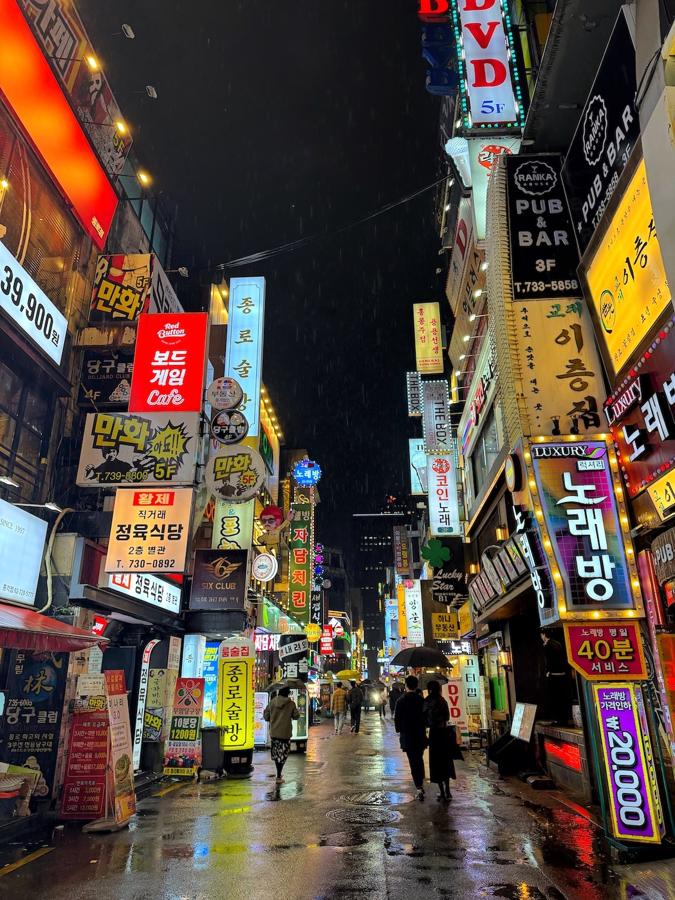
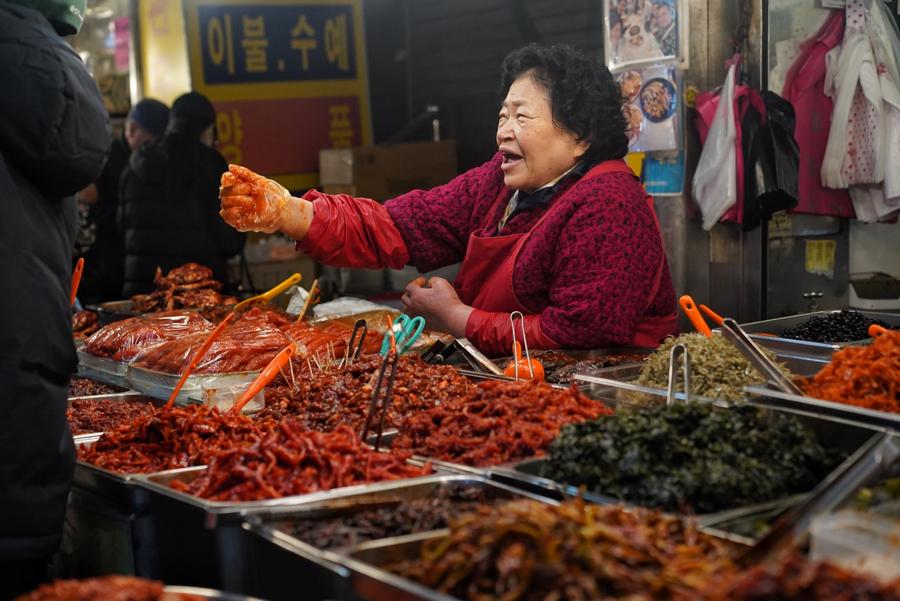
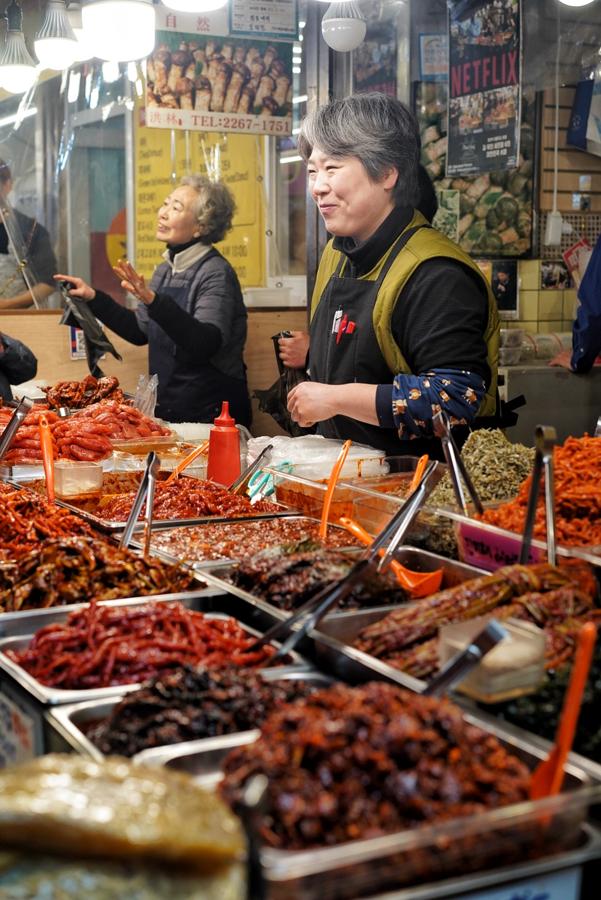
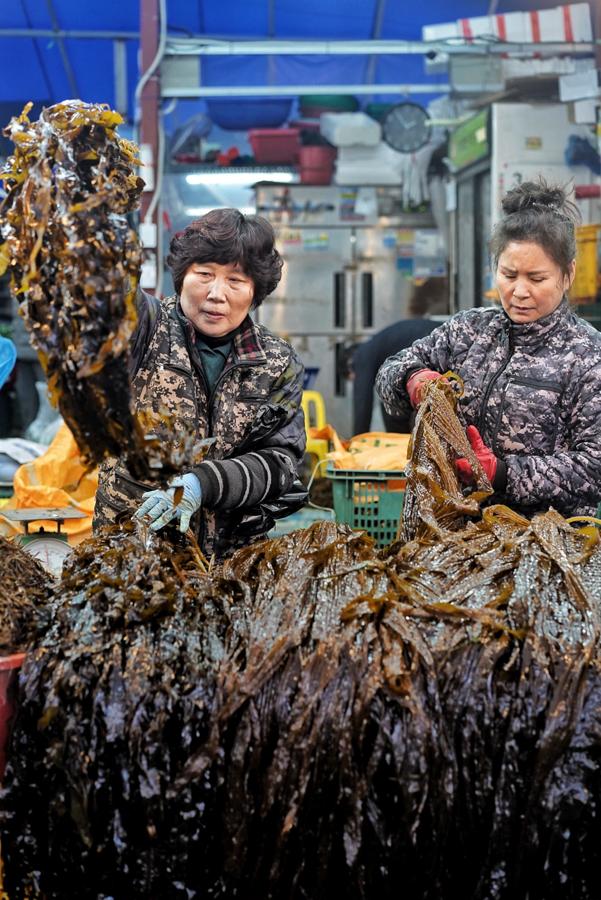
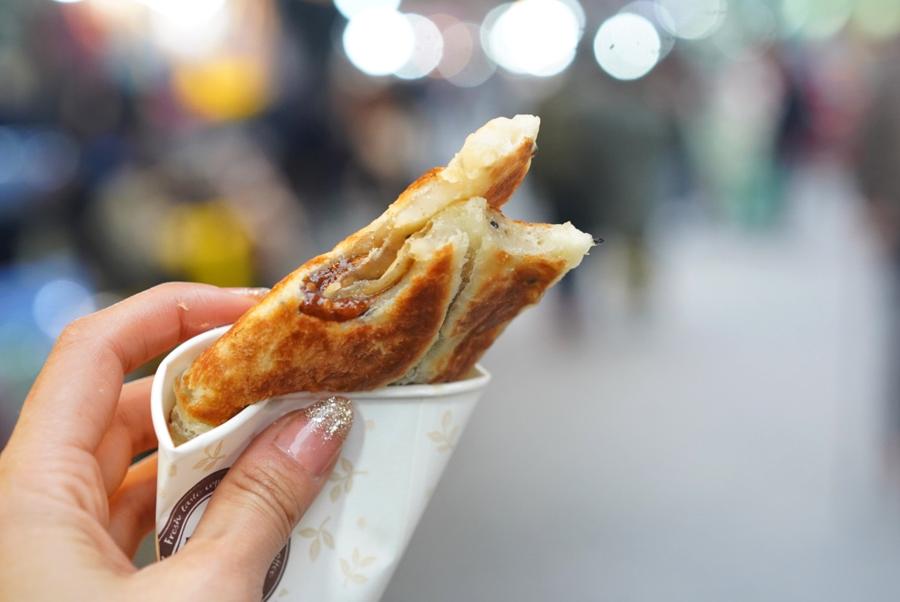
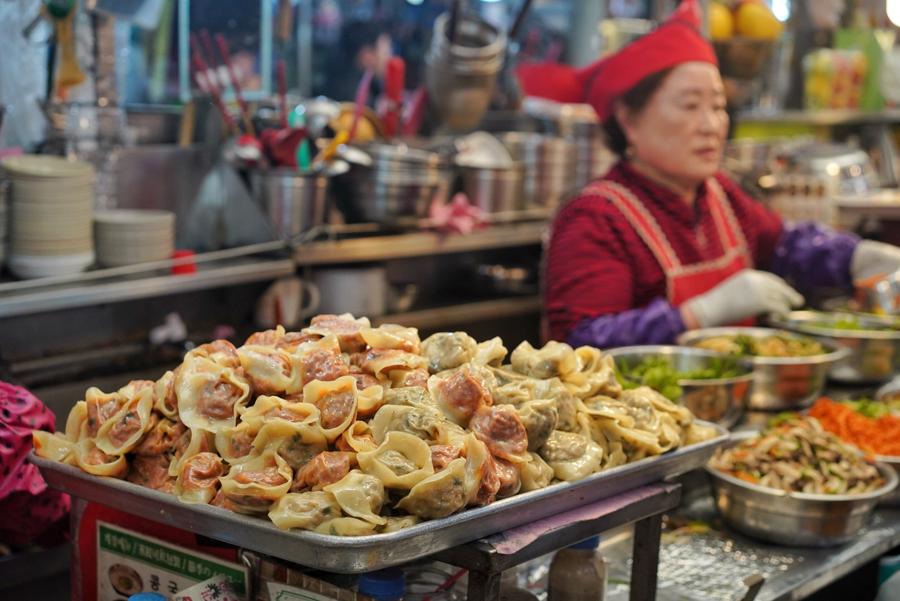
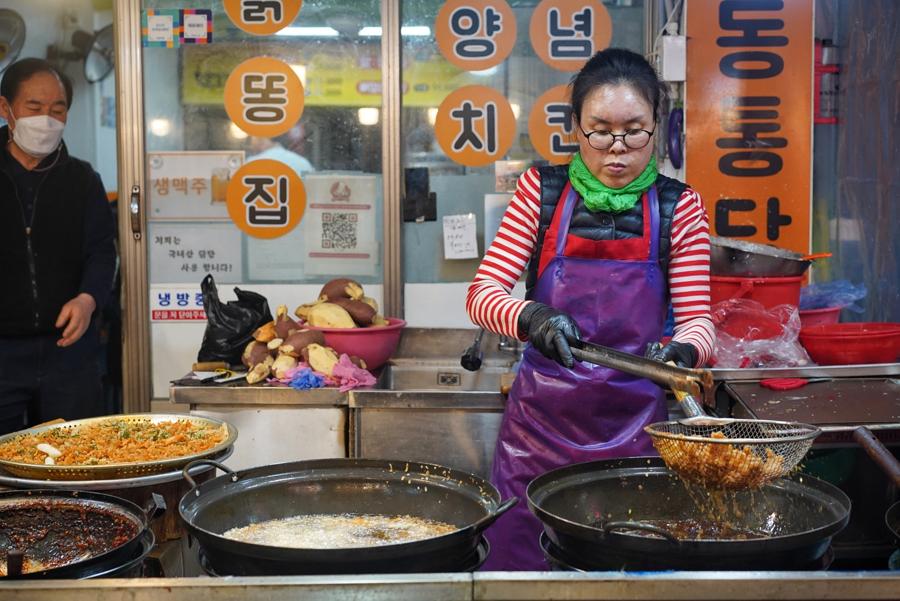
Today, Seoul is a global hub for fashion, entertainment, technology, and food culture, with modern districts like Gangnam being famous for high-end brands and the Myeongdong area for cosmetics. Whether you’re planning a long weekend or a deep-dive, this comprehensive Seoul, South Korea guide covers what to do, eat, drink, and where to stay in the “Seoul of Asia.”
READ MORE: The Complete Busan City Guide for First Time Visitors
Home to nearly 10 million people and almost 20% of the entire population of South Korea, Seoul is a sprawling city made up of many neighborhoods, each with its own vibe, culture, and draws. Here is a quick guide to Seoul’s neighborhoods to help provide the lay of the land before diving into specifics on what to do and where to eat/drink.
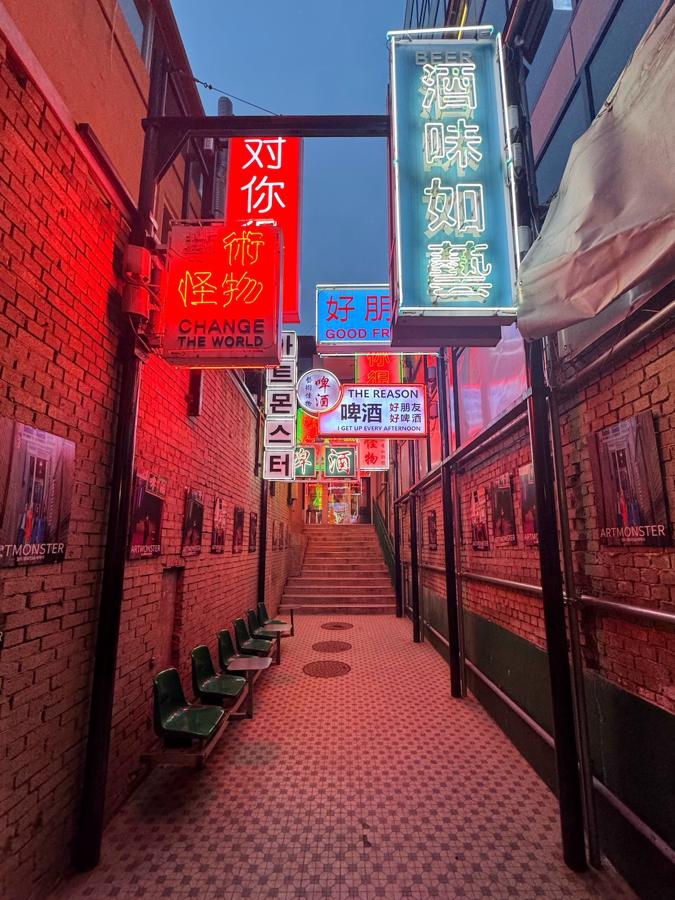
Gangnam
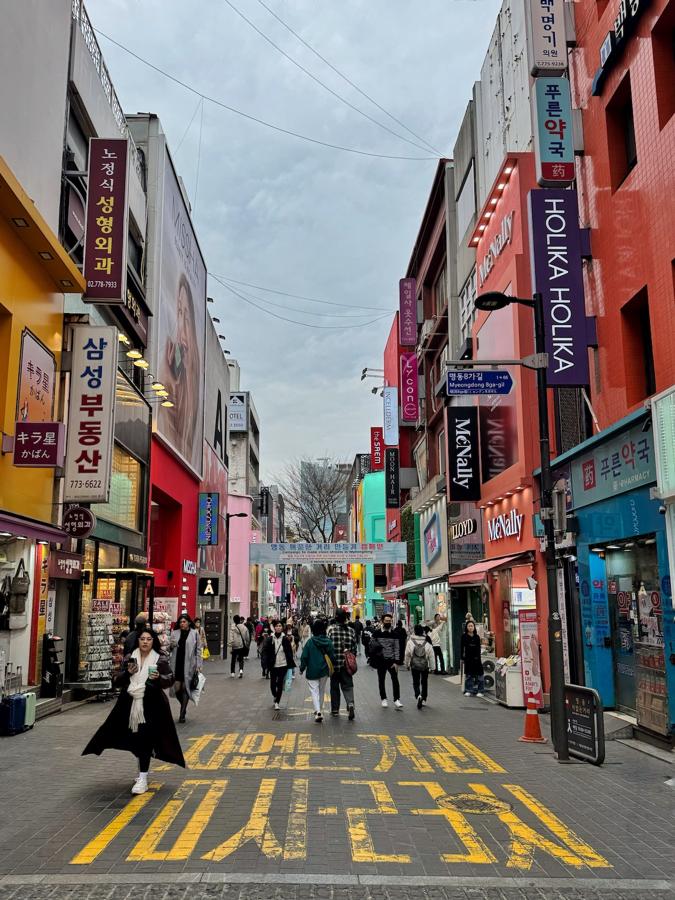
Myeongdong
Seoul has five main royal palaces: Gyeongbokgung, Changdeokgung, Changgyeonggung, Deoksugung, and Gyeonghuigung, each distinct in its own right:
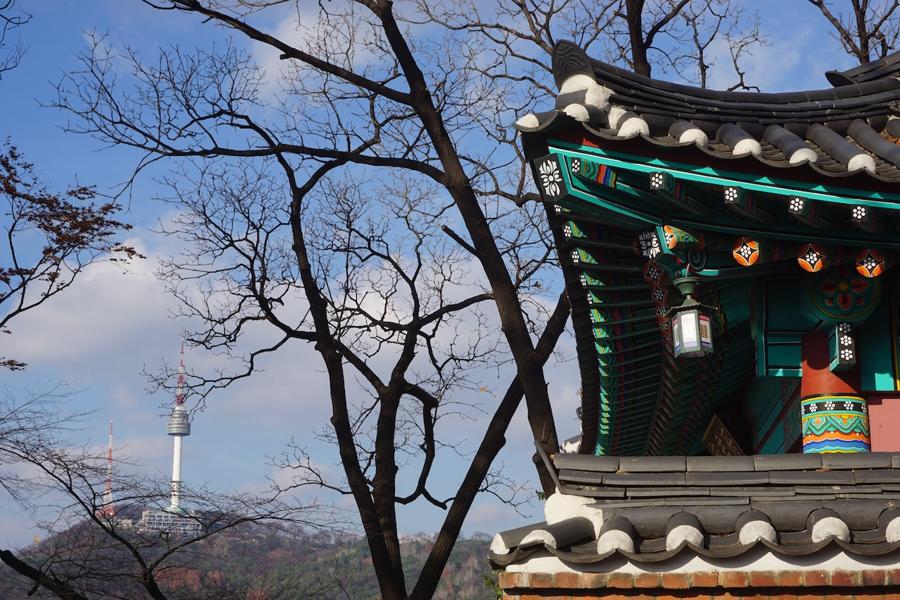
Seoul has many temples, ranging from city-center landmarks to mountainous retreats, offering cultural experiences, peaceful escapes, and one-of-a-kind architecture.
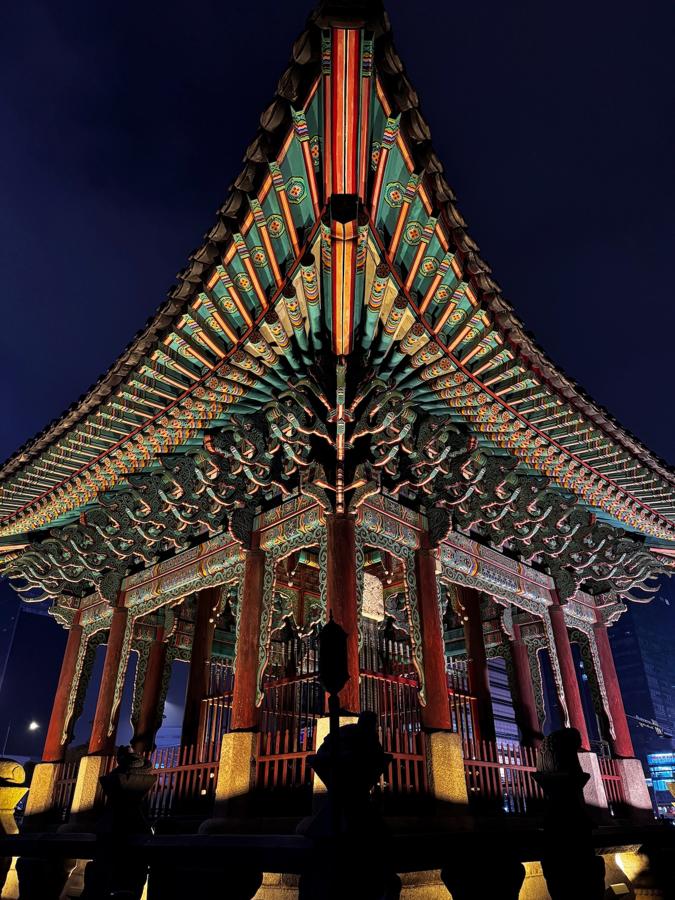
A journey back in time, the metropolis of Seoul is still home to several traditional villages that spotlight the original Korean living style. From ancient architecture to secret gardens, these peaceful retreats are reminiscent of a bygone era.
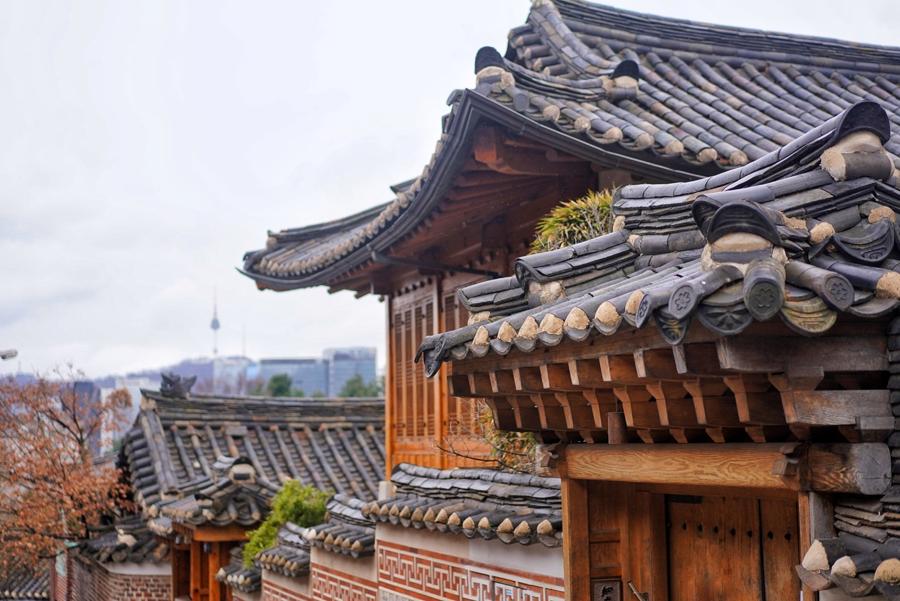
Bukchon Hanok Village
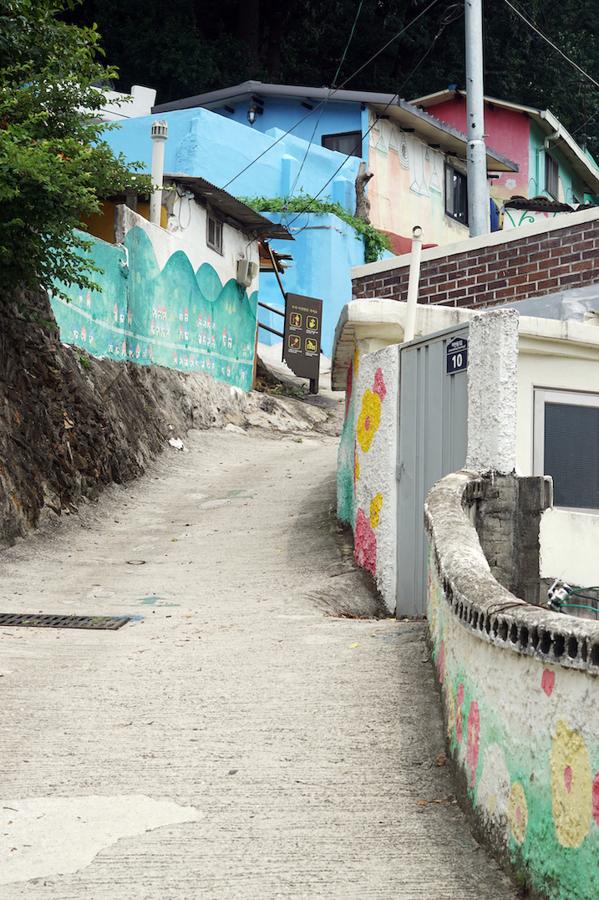
Ihwa Mural Village
Seoul offers diverse shopping experiences, from the K-beauty and trend-driven streets of Myeongdong to the youthful fashion and affordable finds in Hongdae, from the evening street markets of Dongdaemun and Myeongdong to the beauty stores of Gangnam.
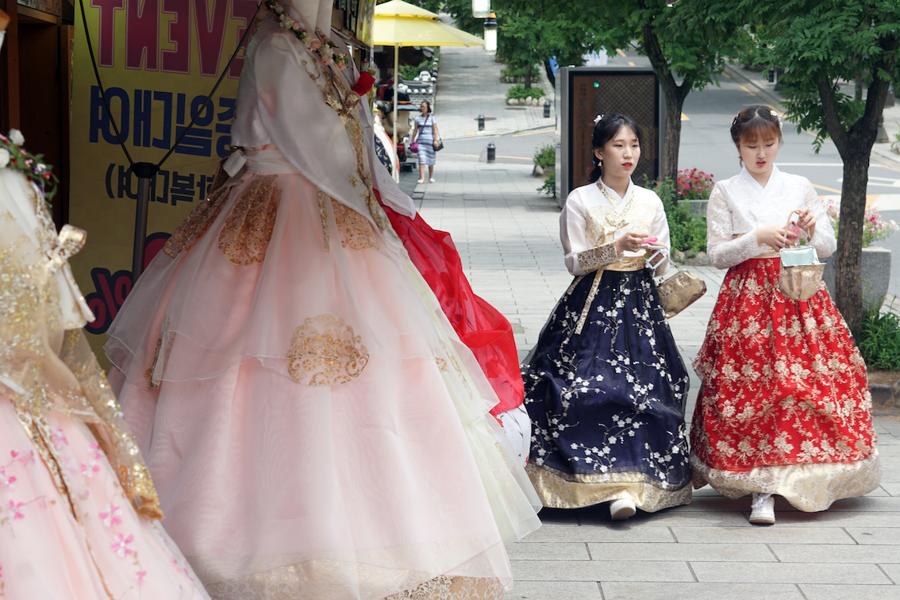
Dongdaemun Market
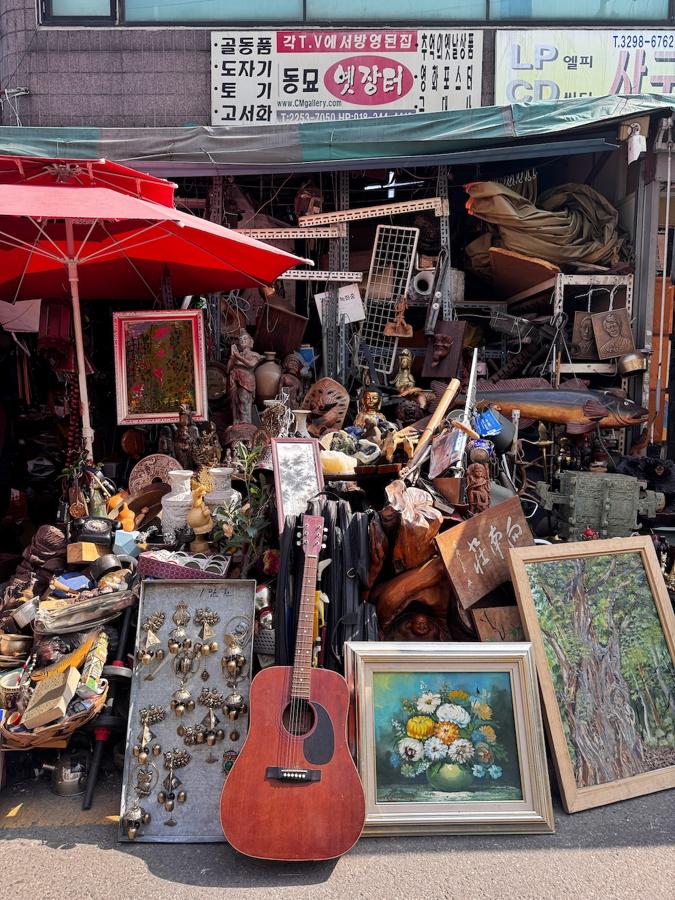
Dongmyo Flea Market
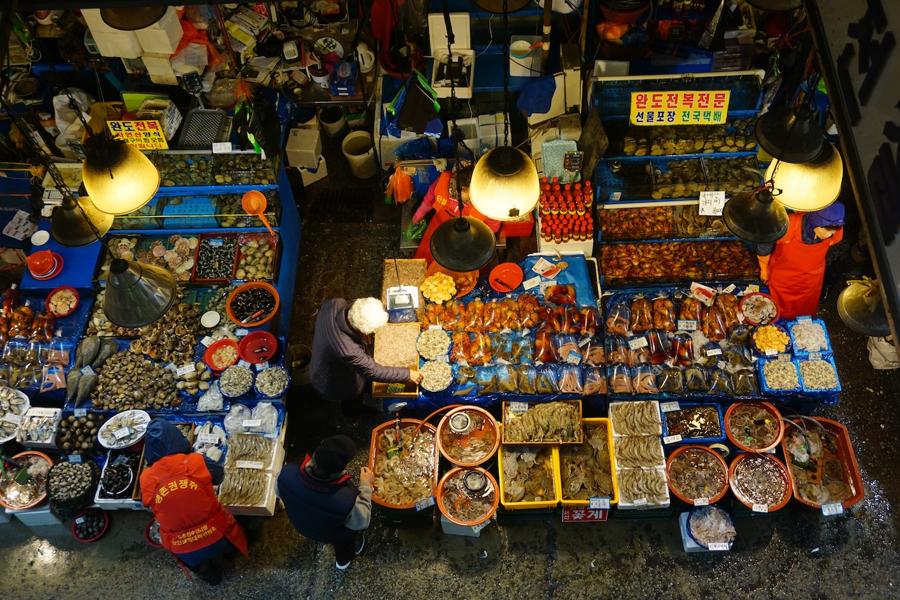
Noryangjin Fish Market
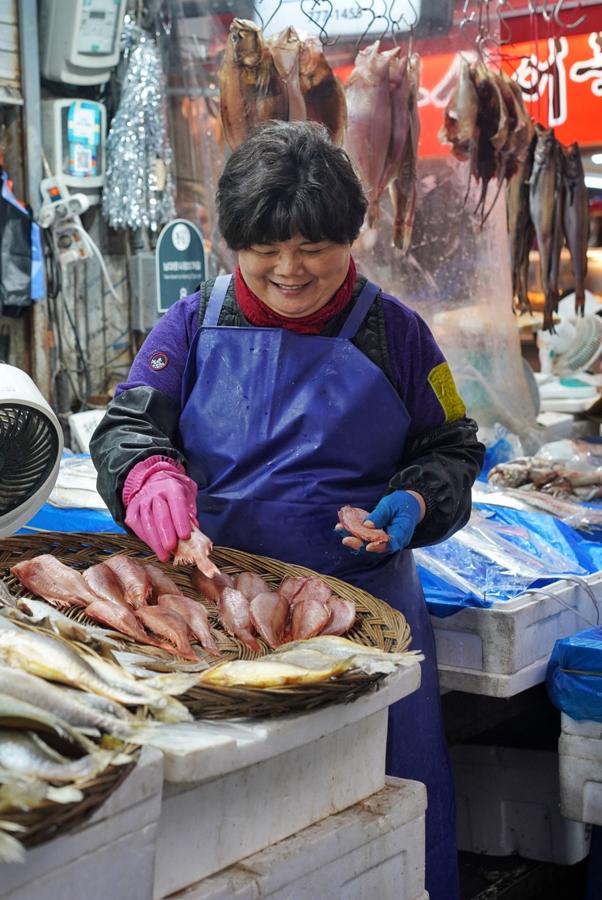
Noryangjin Fish Market
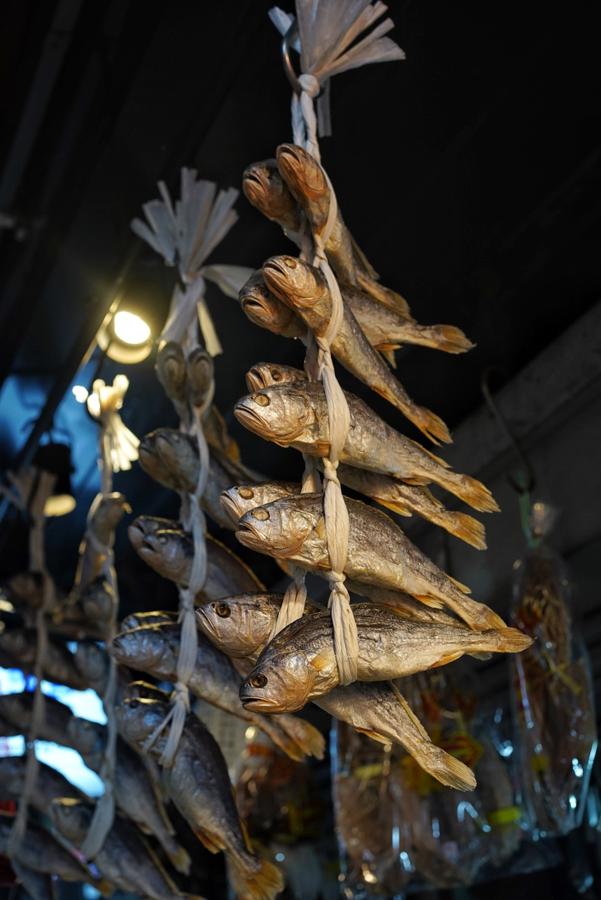
Noryangjin Fish Market
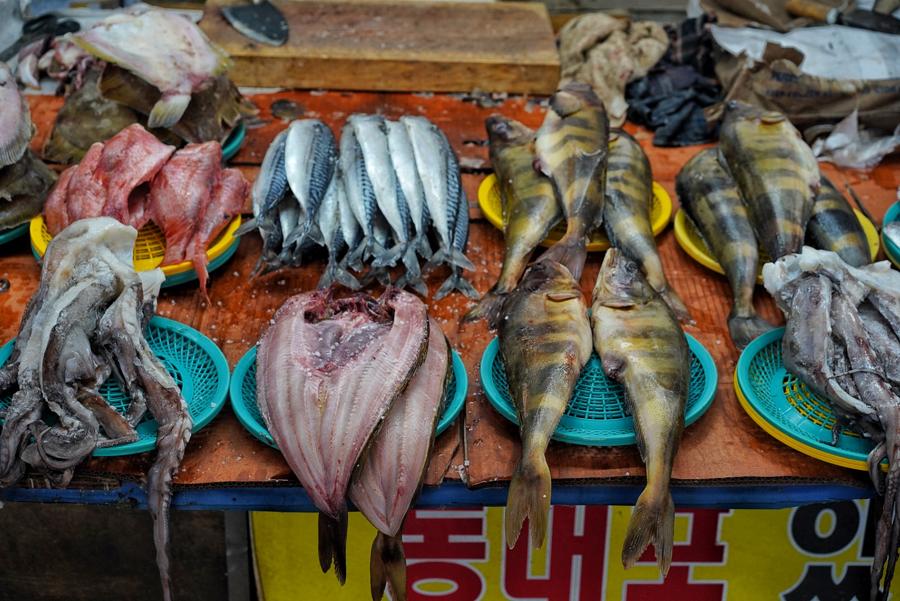
Gyeongdong Market
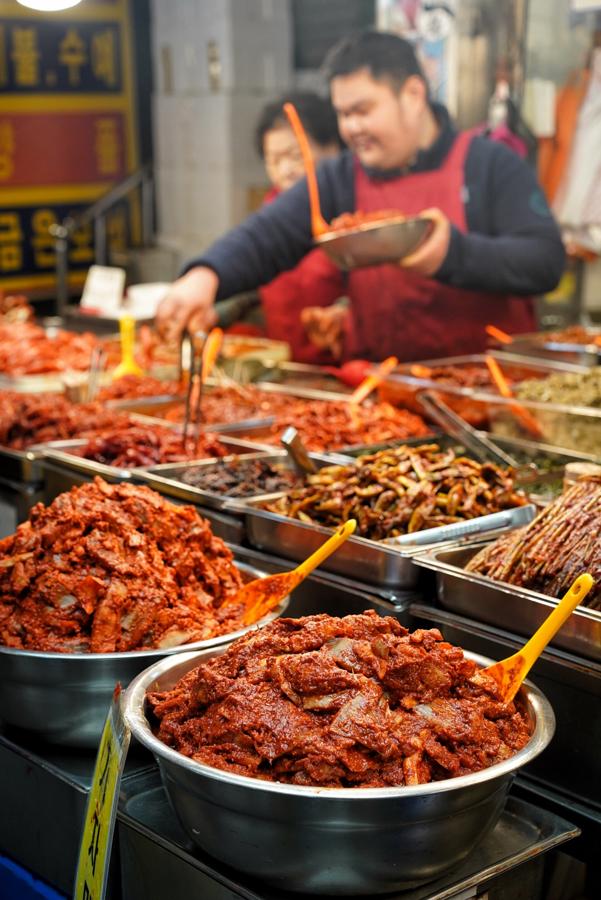
Gwangjang Market
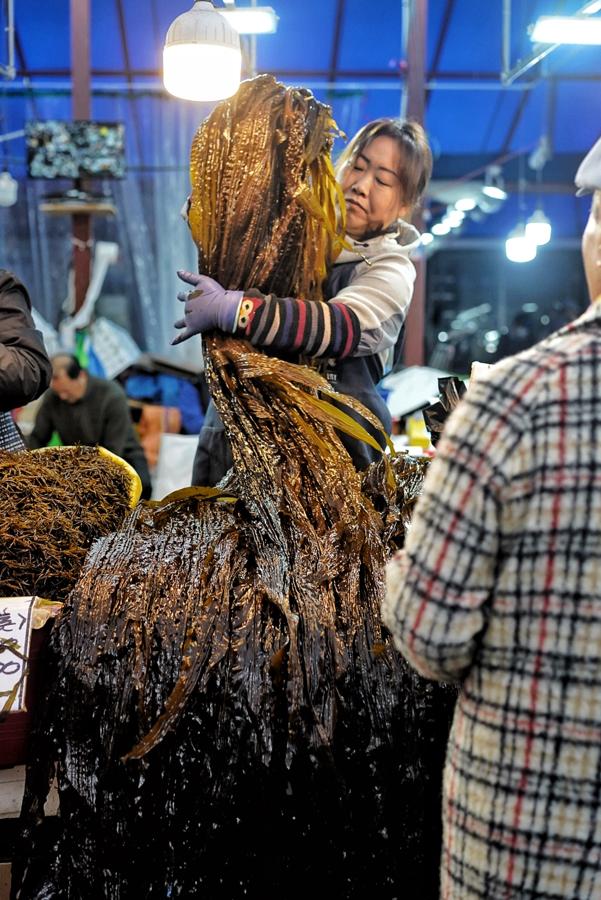
Gyeongdong Market
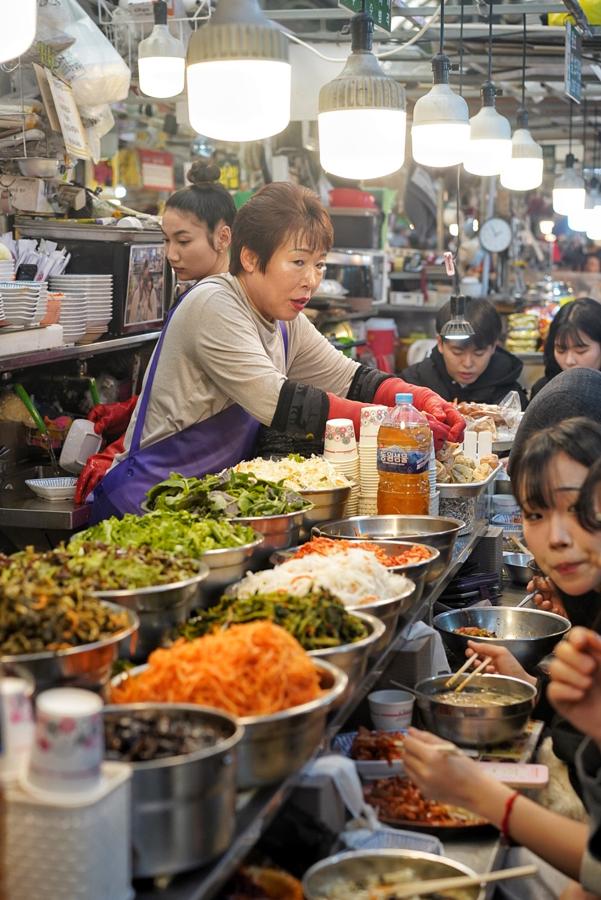
Gwangjang Market
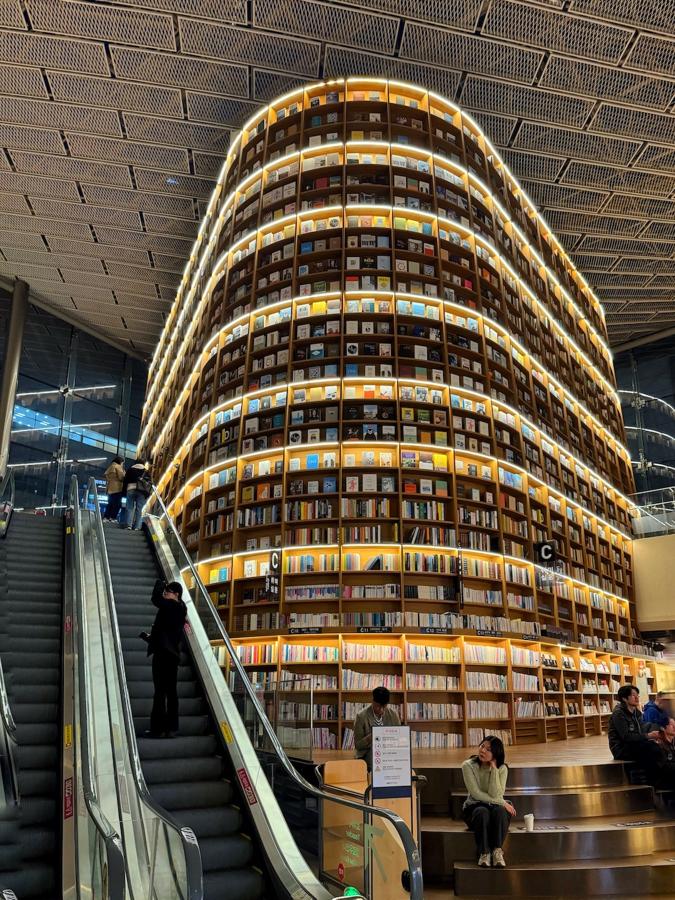
Starfield Library
Seoul's food scene is a vibrant mix of time-honored and modern recipes, from Korean BBQ to cold noodles, from bibimbap to bingsu. Street food is abundant, especially in areas like Myeongdong, featuring items like tteokbokki (spicy rice cakes), hotteok (sweet pancakes), and tornado potatoes. For more traditional meals, try dishes like samgyetang (stuffed ginseng chicken) or kalguksu (knife cut noodles).
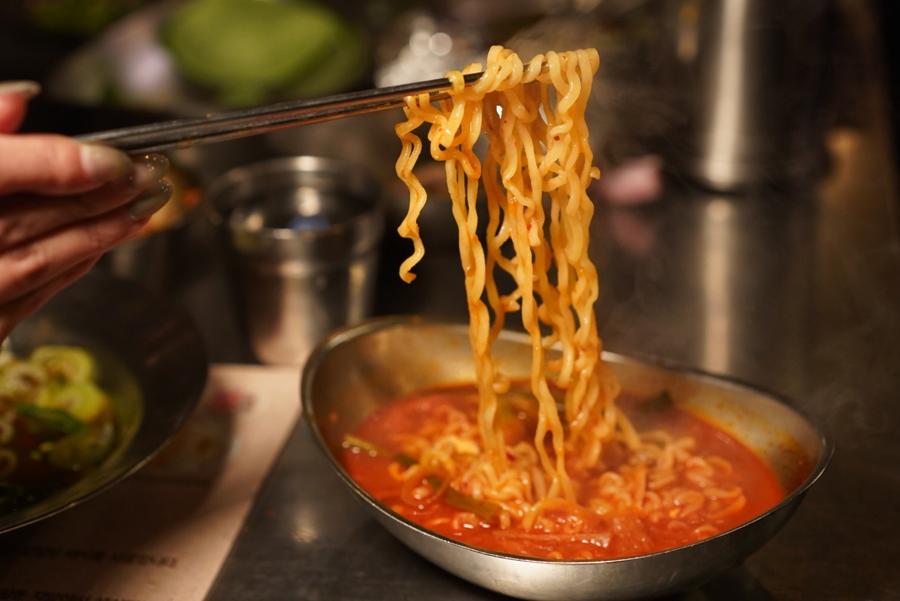
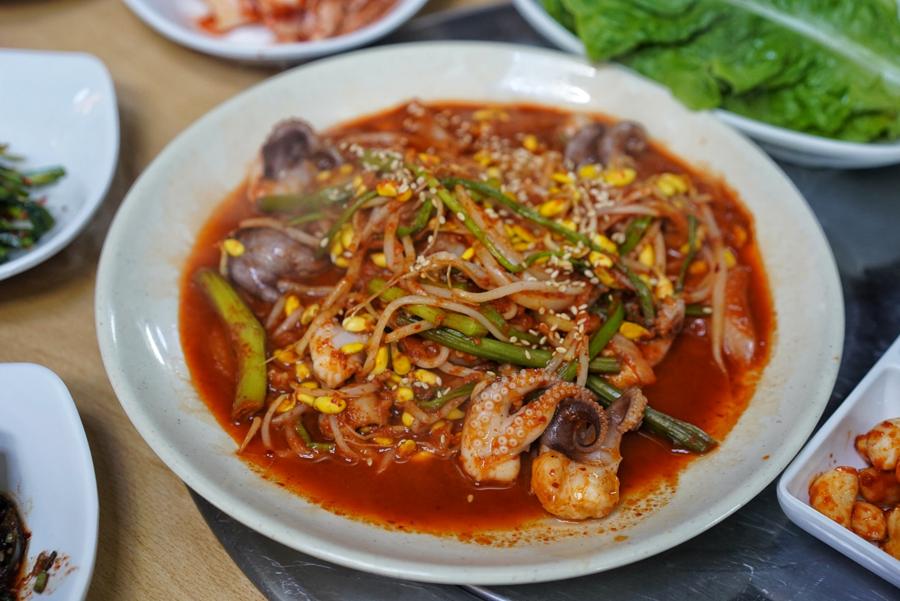
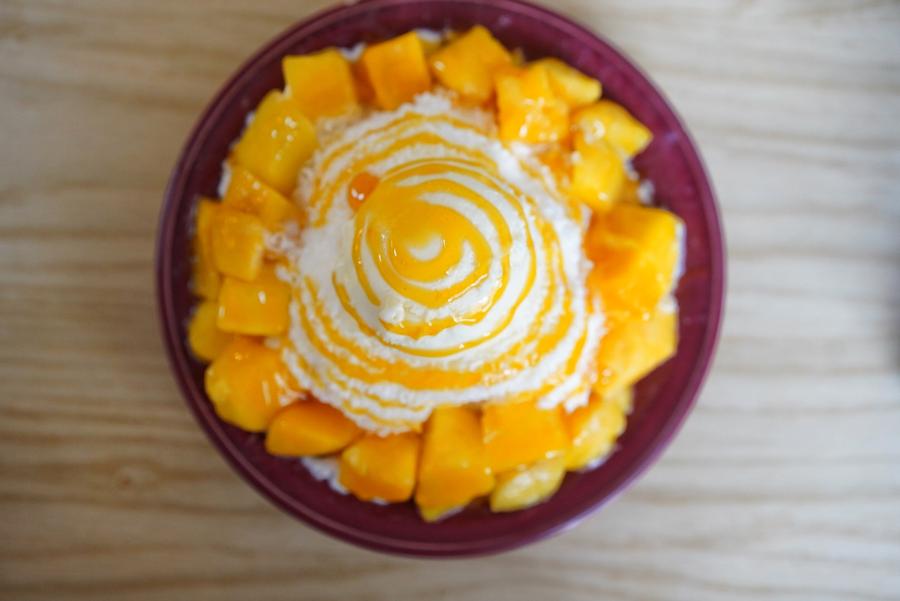
Korean BBQ is a communal dining experience where meat – like pork, beef, or chicken – is grilled at the table, often built into the table itself. The grilled meat is then eaten with various side dishes called banchan, such as kimchi and pickles. The experience is both social and culinary, focusing on cooking the meat to diner’s preference.
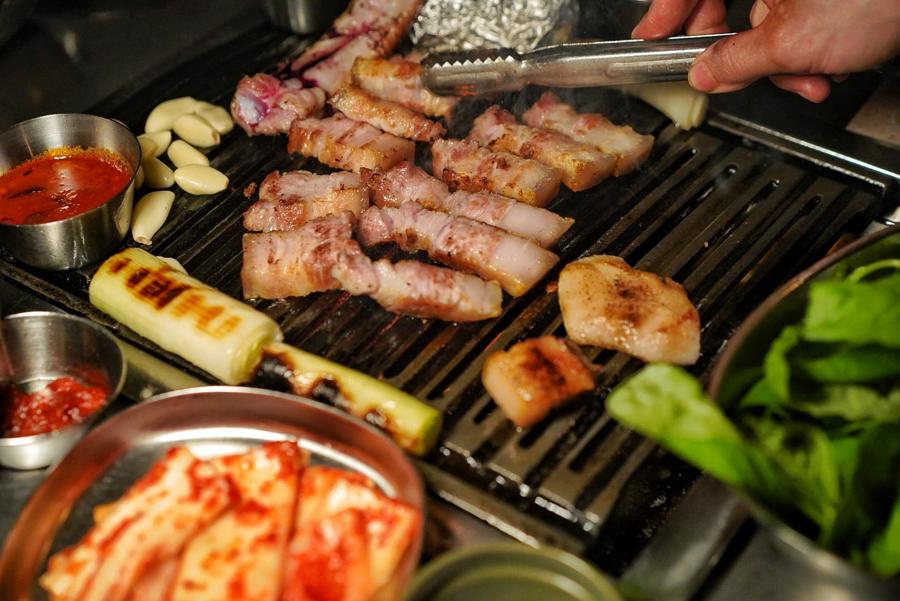
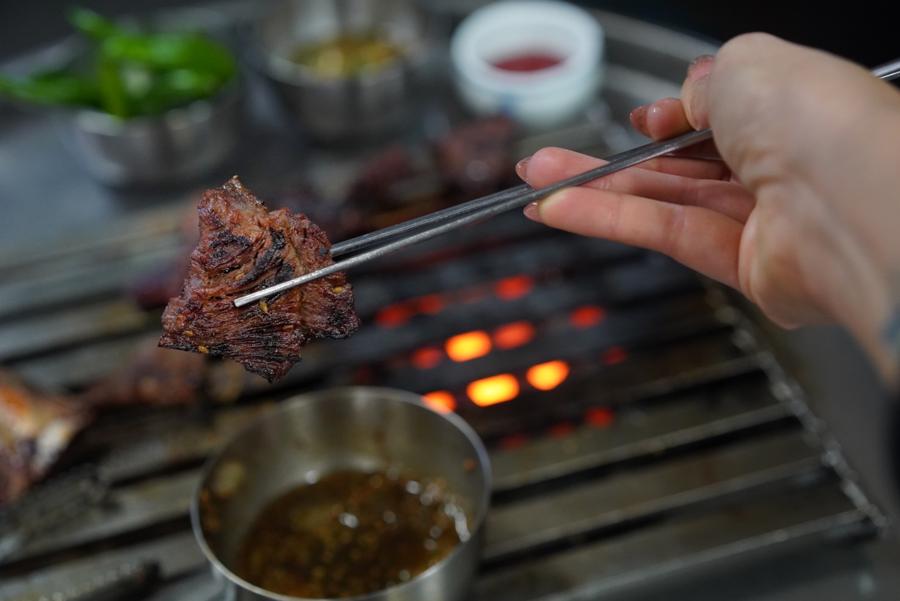
READ MORE: Korean BBQ: A Guide to Shanghai's Best (and Worst) Options
Where to get it:
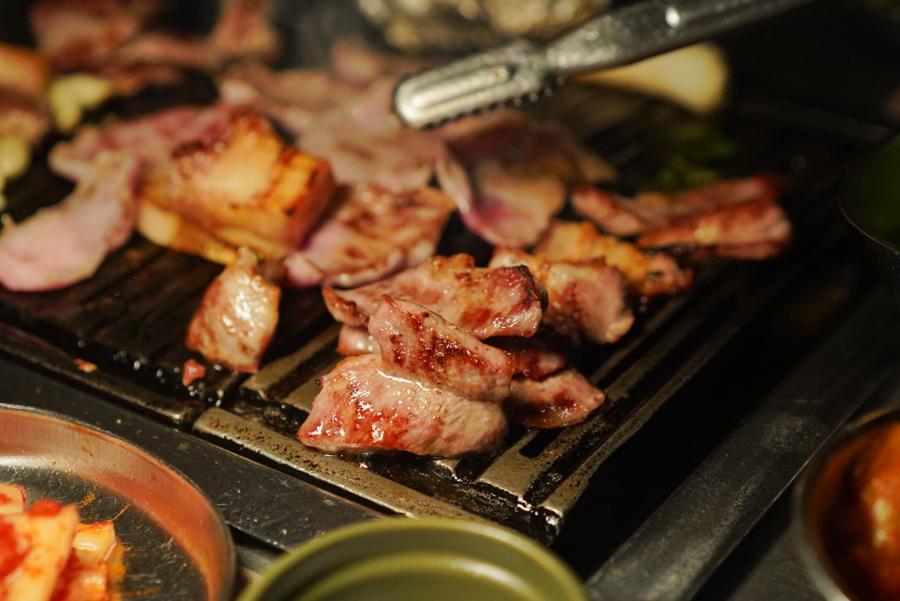
Gold Pig
Geumdwaeji Sikdang (Gold Pig): A highly popular Korean BBQ restaurant in Seoul known for its premium pork and busy atmosphere
149 Dasan-ro, Jung District, Seoul
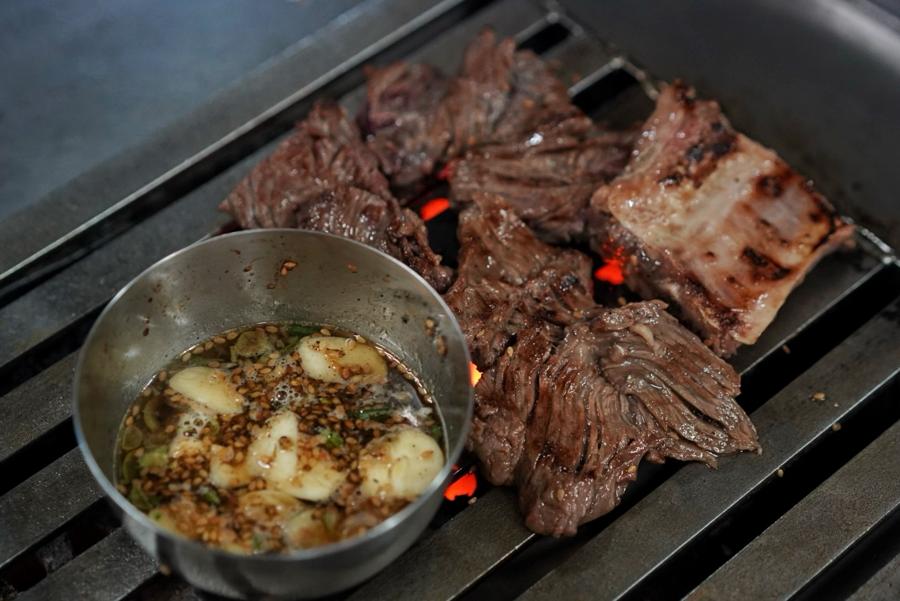
Myeongdong Seoseo Galbi
Myeongdong Seoseo Galbi: A no-frills, standing-only galbi (beef ribs) KBBQ outpost, idea for solo diners as sets are priced per person, beginning at 26,000 won for bone-in short ribs, rice, kimchi, and beer.
20-8 Myeongdong 7ga-gil, Jung District, Seoul
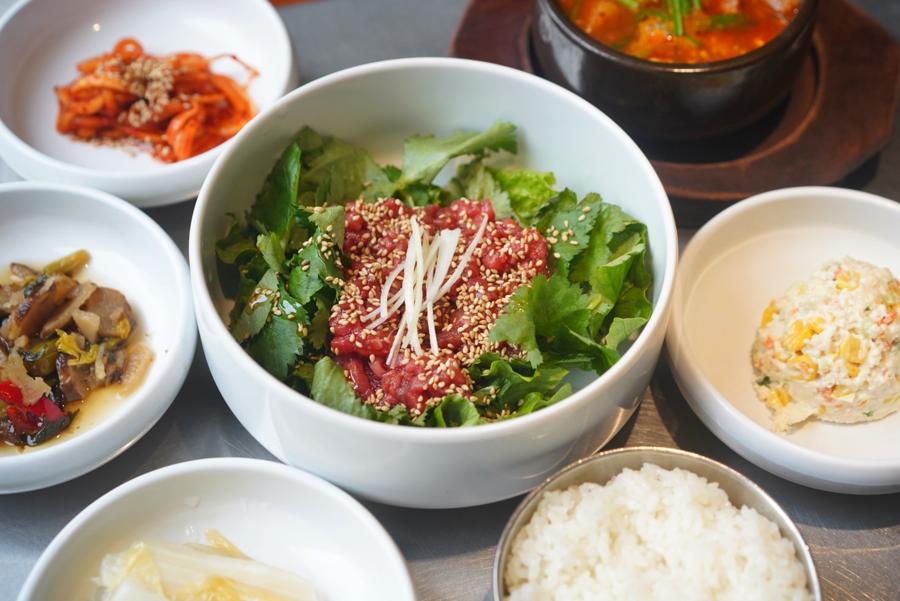
Cheonggiwa Town's yukhoe bibimbap set
Cheonggiwa Town: A Korean BBQ outpost known for its high-quality meats, especially galbi beef, served in a retro 1990s-style space. Aside from KBBQ, the venue also offers a myriad of soups, stews, yukhoe (beef tartare) and other meal sets at affordable prices for both lunch and dinner.
54 Eulji-ro, Jung District, Seoul
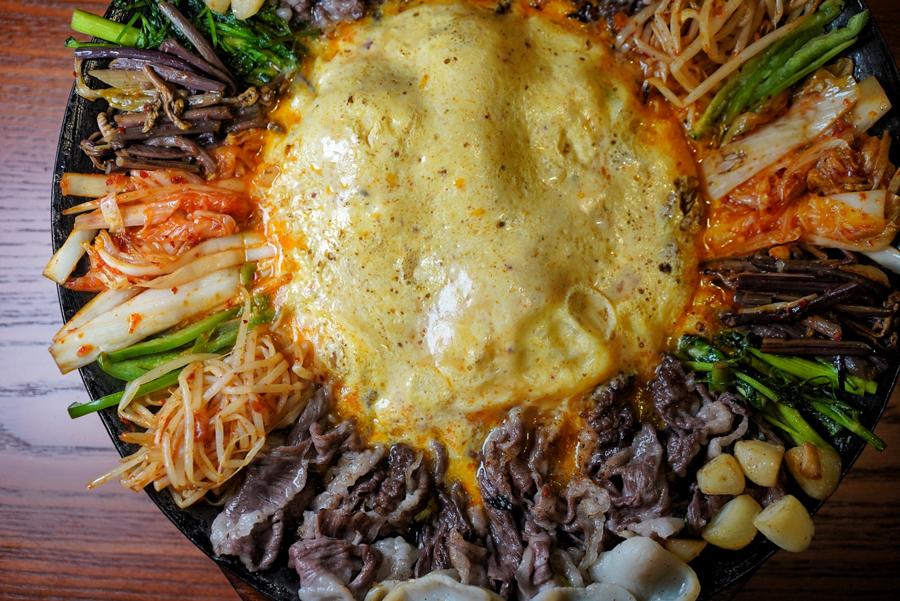
Hamniok
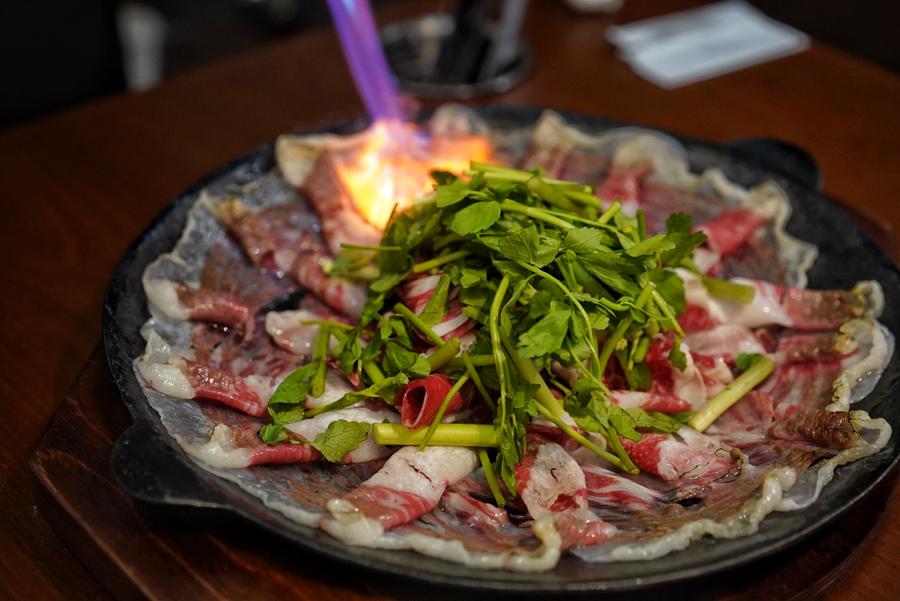
Hamniok
Hamniok: An upscale Korean BBQ restaurant in both the Gangnam and Cheongdam-dong areas, famed for its Chadol Gujeolpan dish served with theatrical table-side grilling. The restaurant houses private rooms plus attentive service, though it is noted to be a slightly pricier option.
85-2 Cheongdam-dong, Gangnam District, Seoul
Korean stews, known as jjigae, are hearty, flavorful, and often spicy dishes typically seasoned with pastes like gochujang (fermented chili paste) or doenjang (fermented soybean paste). They are a staple of Korean cuisine, featuring a mix of ingredients like meat, seafood, vegetables, and tofu, and are often served communally in a single pot.
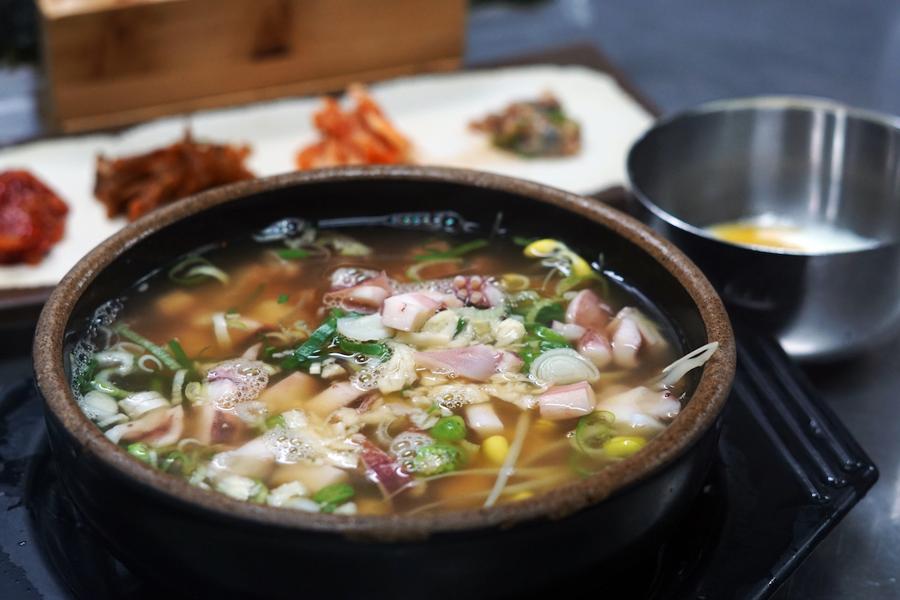
Common examples include kimchi jjigae, which uses fermented kimchi and pork, soondubu jjigae, made with silken tofu, and haejangguk aka hangover stew, customarily made with a hearty beef broth, soybean sprouts, assorted veggies and gochugaru (Korean chili flakes).
Where to get it:
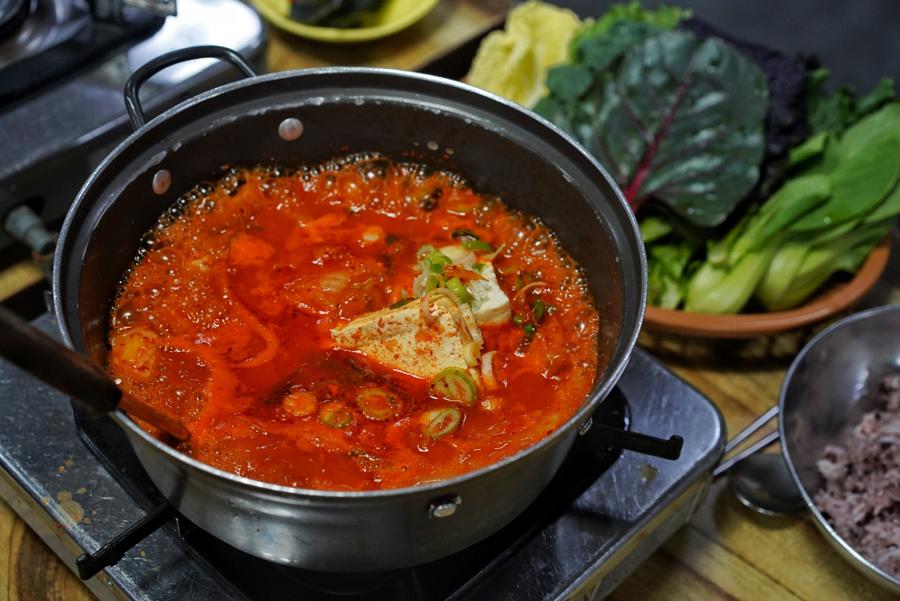
Onjujeong's kimchi stew
Onjujeong: A beloved mainstay in the Seoul dining scene, this restaurant specializes in kimchi jjigae (kimchi stew) sets and samgyeopsal (pork belly). Favored amongst local workers and tourists seeking a filling meal alike, here the pork belly and kimchi are consumed wrapped in a variety of lettuce leaves and other greens and herbs.
32 Changgyeonggung-ro 8-gil, Jung District, Seoul
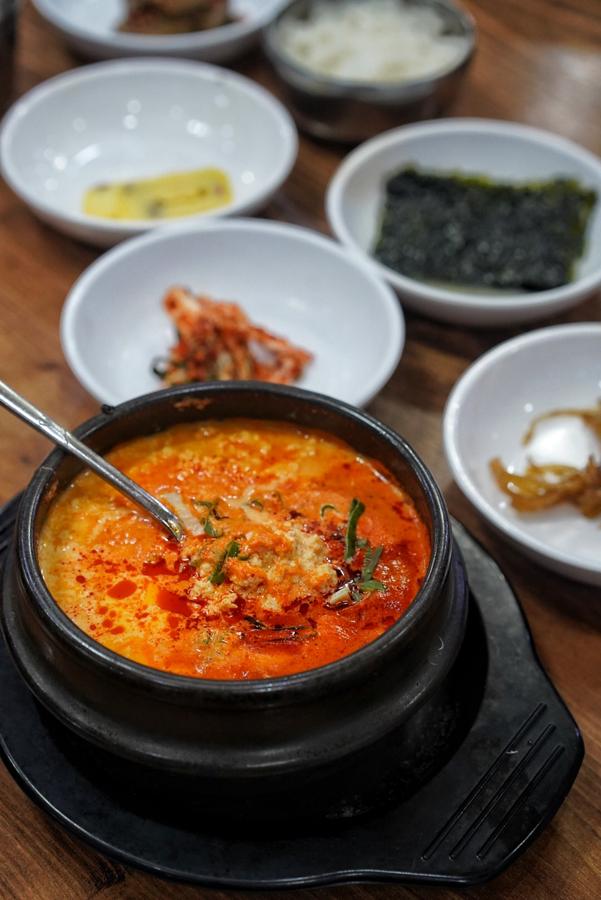
Jaedong Sundubu's sundubu jjigae
Jaedong Sundubu: A bustling spot for handmade, bubbling hot sundubu jjigae (soft tofu stewed) served in a clay pot. The sets include stew, rice, and unlimited banchan.
6, Bukchon-ro 2-gil, Jongno-gu, Seoul
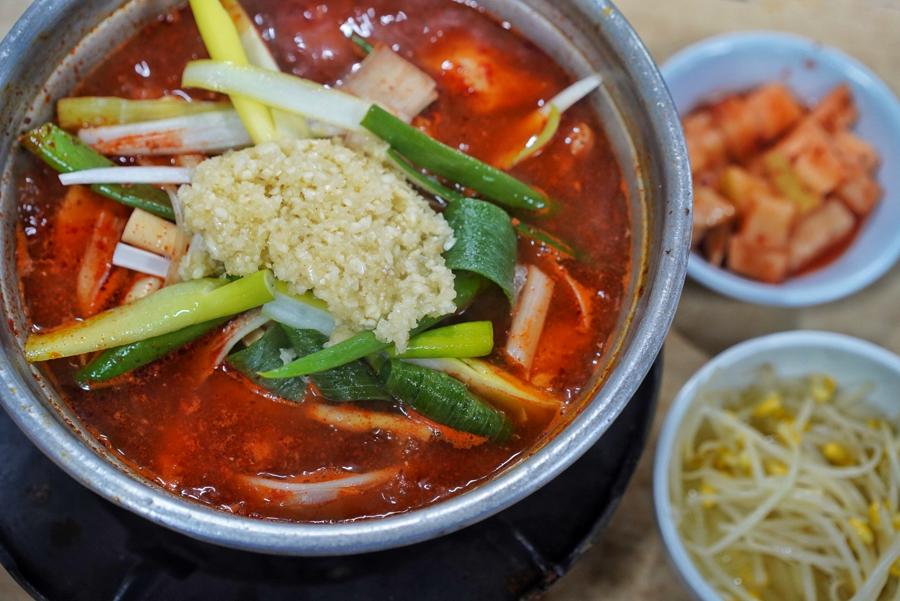
Gyerim Sikdang
Gyerim Sikdang: A historic Korean restaurant serving just one thing: dakdoritang aka spicy braised chicken stew. One set (30,000 won) feeds two people and includes an entire chopped chicken stewed with potatoes, leeks, rice cakes and a ton of chopped garlic in a spicy broth.
39 Donhwamun-ro 4-gil, Jongno District, Seoul
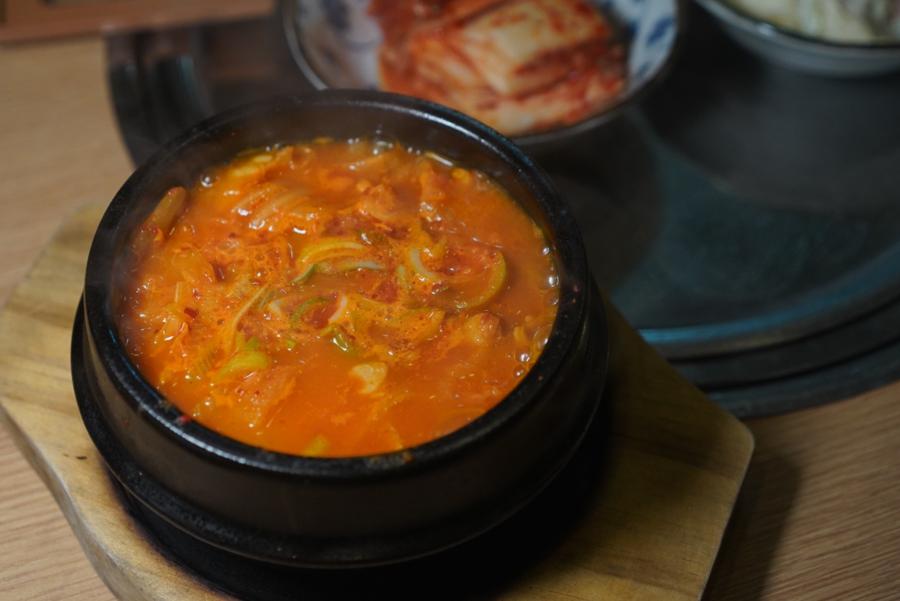
Jeonju Yu Halmeoni Bibimbap Bukchang-dong Main's kimchi soup
Jeonju Yu Halmeoni Bibimbap Bukchang-dong Main: A long-standing Jeonju-style bibimbap shop, this restaurant is beloved for its authentic dishes coupled with local ingredients, friendly service, and cozy atmosphere. While bibimbap is in the name, the kimchi soup is really the most memorable dish on the menu, served piping hot with a table full of banchan.
12-2 Bukchang-dong, Jung District, Seoul
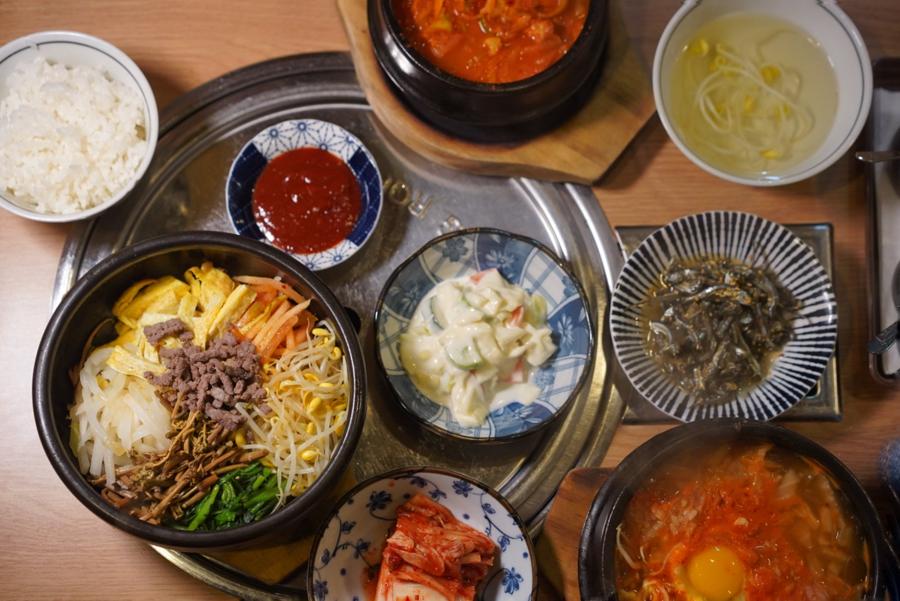
Meaning "mixed rice," this Korean staple consists of a bowl of white rice topped with an assortment of ingredients like sautéed and seasoned vegetables, meat (usually beef), and a fried egg. It is served with a spicy gochujang (red pepper paste) sauce that is mixed with the other ingredients just before eating, Bibimbap can be served hot or cold with both raw and/or cooked ingredients that vary by region and season.
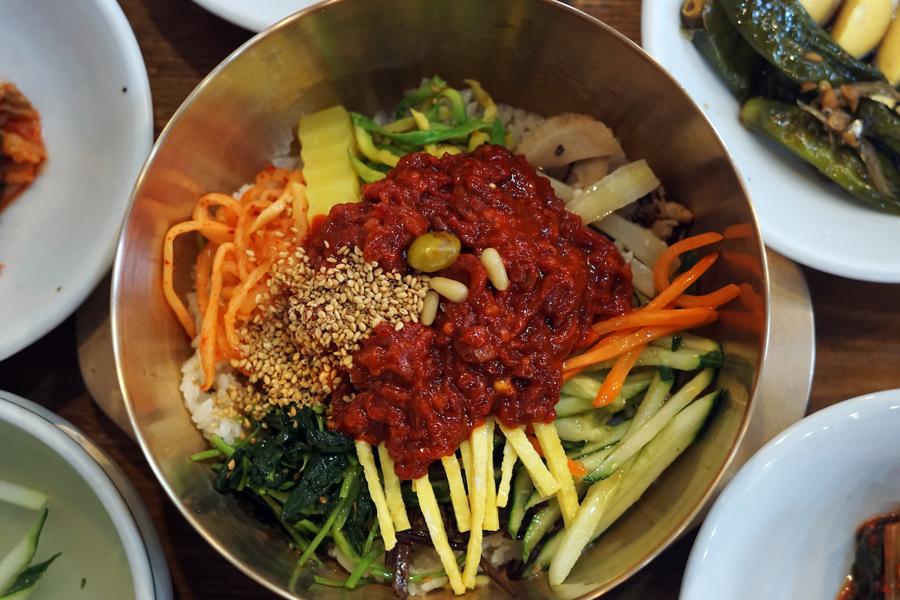
Jeonju Yu Halmeoni Bibimbap Bukchang-dong Main's yukhoe bibimbap
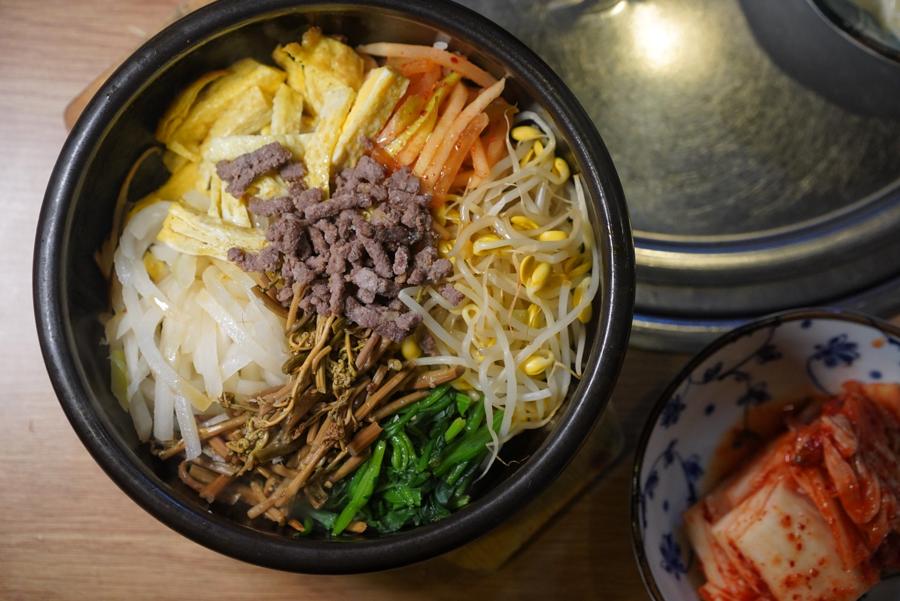
Jeonju Yu Halmeoni Bibimbap Bukchang-dong Main's dolsot bibimbap
Where to get it:
Jeonju Yu Halmeoni Bibimbap Bukchang-dong Main: A long-standing Jeonju-style bibimbap shop, this restaurant is beloved for its authentic dishes coupled with local ingredients, friendly service, and cozy atmosphere.
12-2 Bukchang-dong, Jung District, Seoul
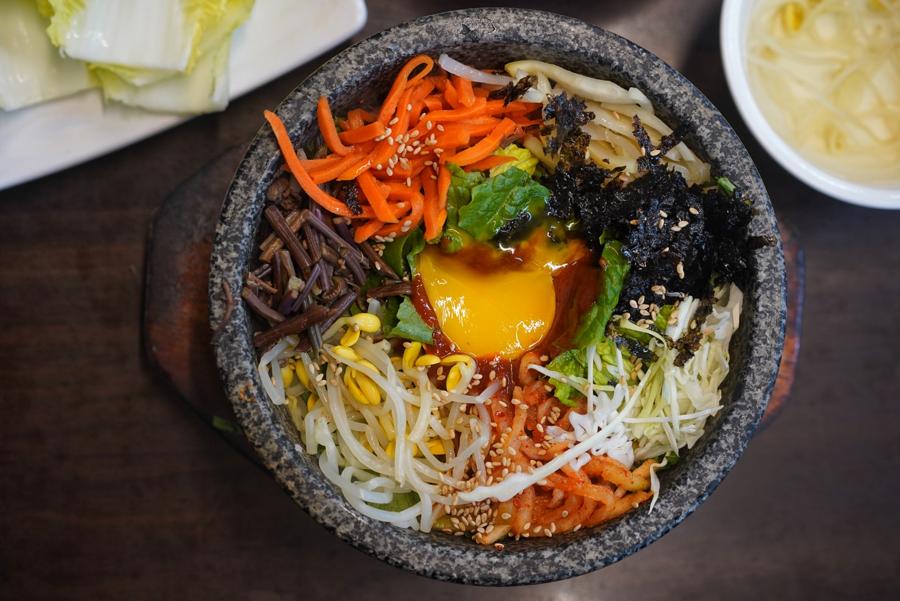
Andongjip Son Kalguksi's dolsot bibimbap
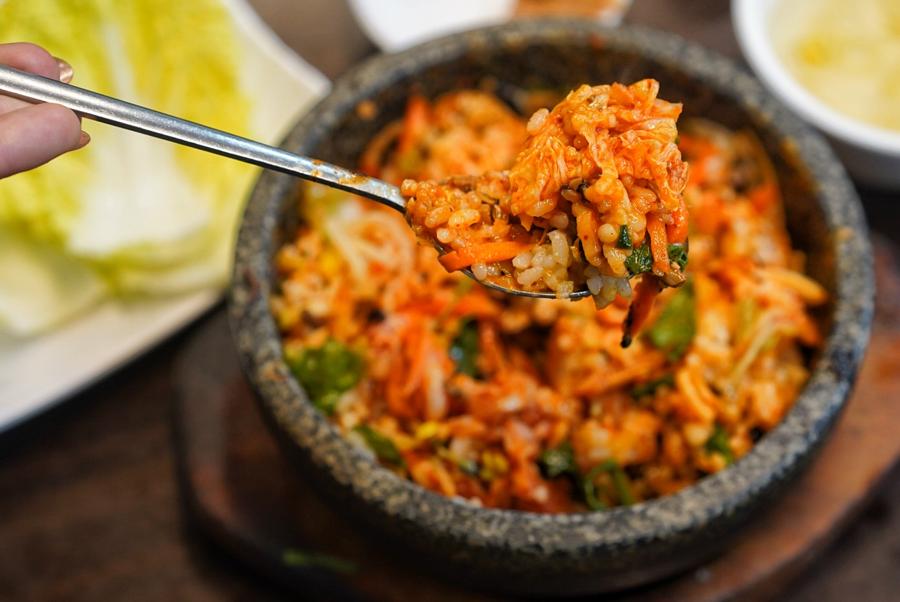
Andongjip Son Kalguksi's dolsot bibimbap
Andongjip Son Kalguksi: Aside from handmade knife-cut noodles (kalguksu), the owner Chef Kim Mi-ryeong, also known as "Auntie Omakase #1" from the Netflix show Culinary Class Wars makes some standout dolsot (hot stone sizzling) bibimbap inside Gyeongdong Market.
1022 Jegi-dong, Dongdaemun District, Seoul
Mokmyeoksanbang: Featured in the Michelin Guide, this restaurant offers a minimalist and modern setting. All toppings are served separately so you can add them to your liking.
71 Toegye-ro 20-gil, Jung District, Seoul
Mandu are Korean dumplings made from a wheat-flour dough filled with ingredients like meat, kimchi, and vegetables, and can be prepared by steaming, boiling, pan-frying, or deep-frying. They vary in shape, size, and filling, with versions including steamed or boiled plump dumplings, pan-fried flatter dumplings, and even a thick-skinned steamed bun variety. Mandu are a versatile food in Korea, served on their own or as a key component in other dishes like noodle soups.
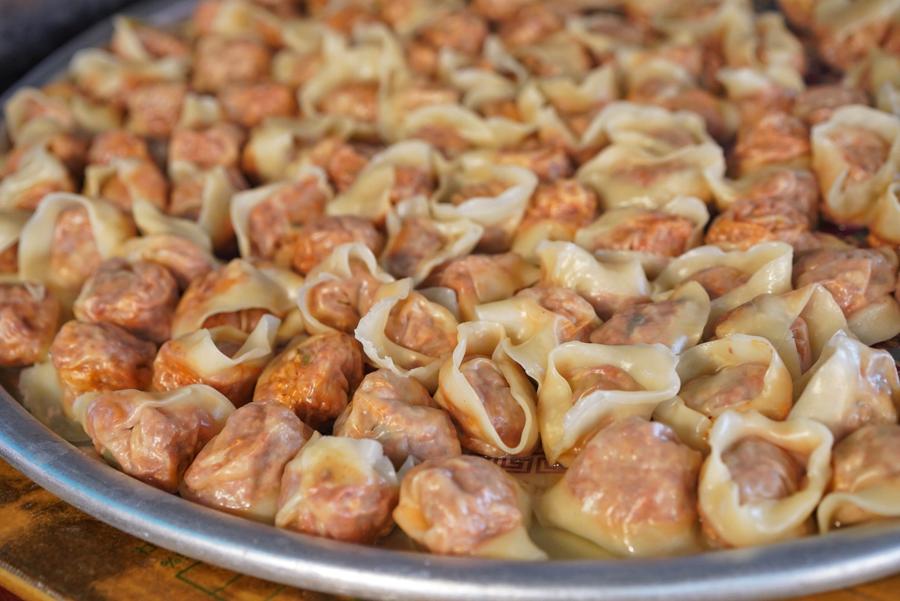
Where to get it:
Myeongdong Kyoja Main Restaurant: This family-owned, Michelin Bib Gourmand restaurant was founded 1966 and is famous for its simple menu of four highly-rated Korean comfort food dishes: kalguksu (knife-cut noodle soup), mandu (dumplings), bibim guksu (spicy mixed noodles), and kongguksu (soy milk noodle soup). This always busy Myeongdong outpost is loved for its generous portions and signature, garlicky homemade kimchi.
29 Myeongdong 10-gil, Jung District, Seoul
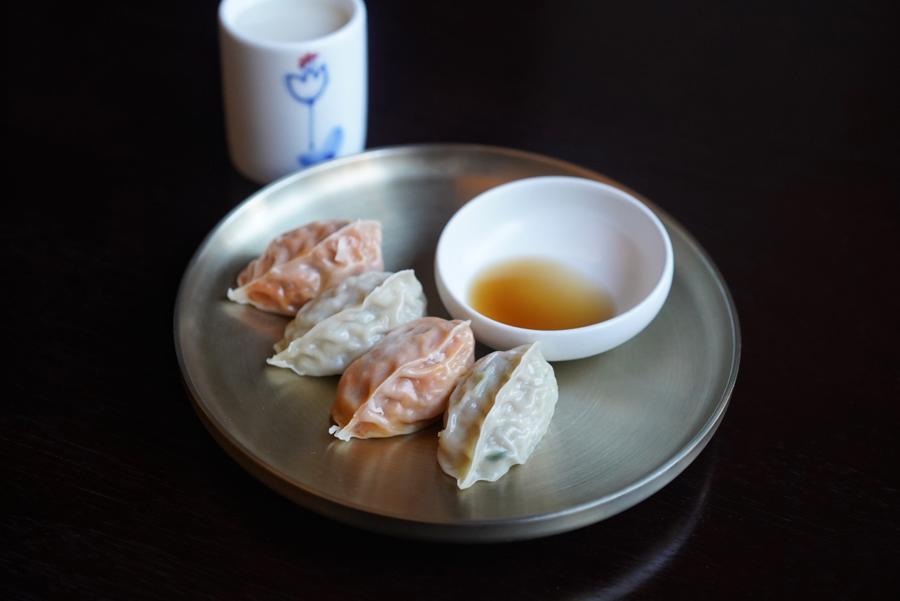
Myeonseoul
Myeonseoul: This shop specializes in house-made noodles and dumplings using a blend of whole wheat, mung bean, and dried pollack, without chemical additives. The restaurant, opened by Chef Kim Do-yun, has several signature noodle dishes, such as perilla oil noodles, spicy noodles, and bracken whole wheat noodles, plus an array of thin-skinned and expertly filled pork and kimchi dumplings, best enjoyed with traditional Korean spirits, like makgeolli and soju.
805 Seolleung-ro, Gangnam District, Seoul
Korean cold noodles, or naengmyeon, are a refreshing dish made with thin, chewy noodles, typically in a savory broth or a spicy sauce, and topped with ingredients like vegetables, meat, and boiled egg. The two main types are mul naengmyeon (served in an icy broth) and bibim naengmyeon (tossed with a spicy sauce).
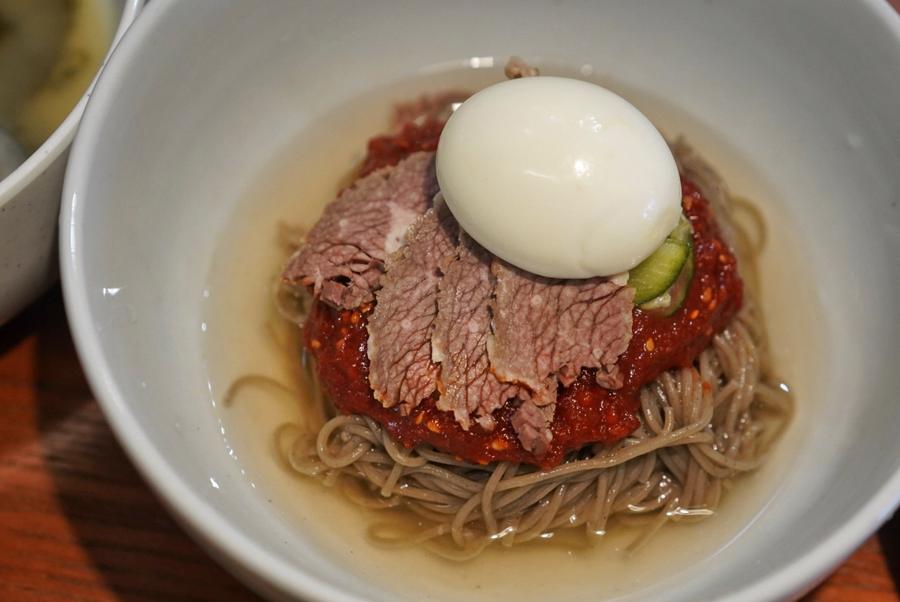
Hamniok
Where to get it:
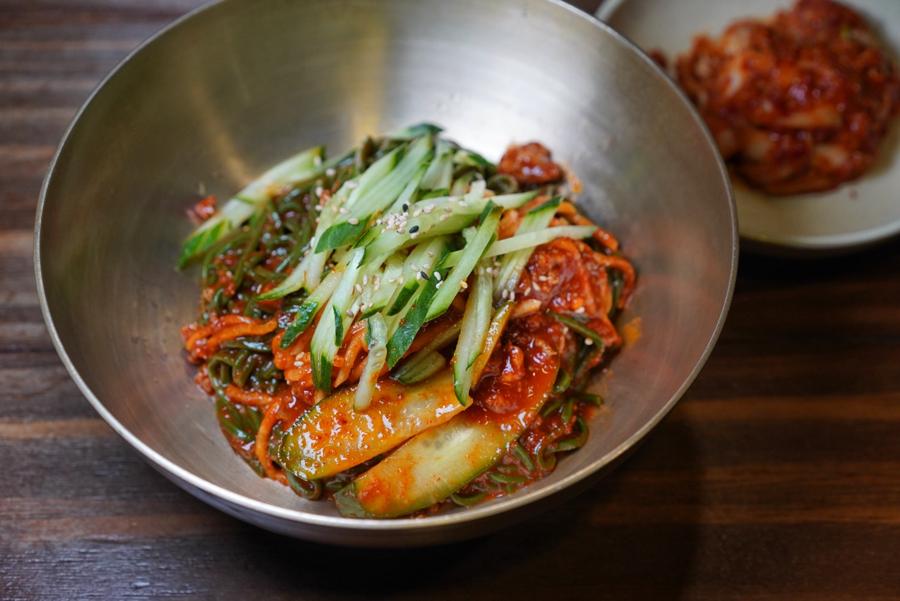
Myeongdong Kyoja Main Restaurant
Myeongdong Kyoja Main Restaurant: This family-owned, Michelin Bib Gourmand restaurant was founded 1966 and is famous for its simple menu of four highly-rated Korean comfort food dishes: kalguksu (knife-cut noodle soup), mandu (dumplings), bibim guksu (spicy mixed noodles), and kongguksu (soy milk noodle soup). This always busy Myeongdong outpost is loved for its generous portions and signature, garlicky homemade kimchi.
29 Myeongdong 10-gil, Jung District, Seoul
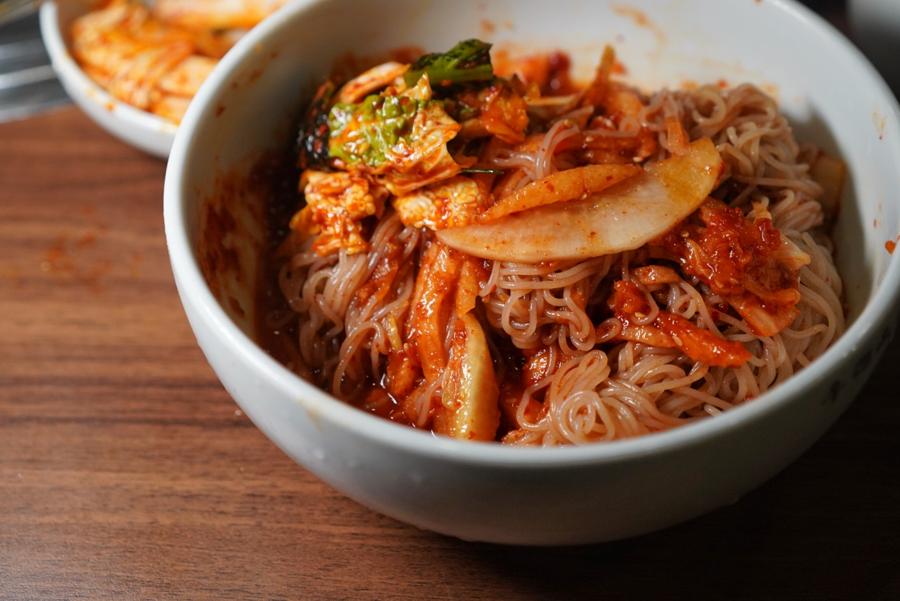
Woo Lae Oak
Woo Lae Oak: Founded in 1946, this Michelin Guide recognized restaurant is renowned for its traditional Pyongyang-style naengmyeon (cold buckwheat noodles) and Korean barbecue, particularly its bulgogi. Prices here are slightly higher, owed to the top-grade Hanwoo beef used across most dishes. Pro tip: Go at off hours as there is usually a wait.
62-29 Changgyeonggung-ro, Jung District, Seoul
Dak galbi features boneless chicken stir-fried with vegetables like cabbage, onions, and sweet potatoes in a spicy and savory gochujang-based sauce. It's a communal meal, often cooked tableside on a large hotplate, and eaten by wrapping the ingredients in lettuce and perilla leaves. The leftovers are combined with rice and fried on the hotplate for a crispy carb-filled finish.
Where to get it:
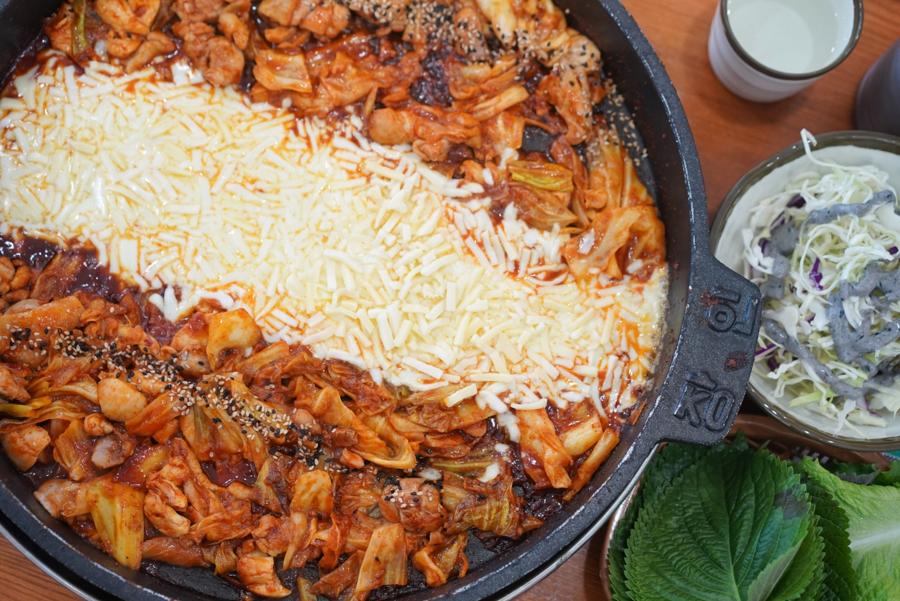
Jongno JangIn Dakgalbi Restaurants
Jongno JangIn Dakgalbi Restaurants: A restaurant chain serving dak galbi sets at an economical price, this is a great spot for a filling lunch or dinner. With free flow sides – like paper-thin pickled daikon radish, cabbage salad with black sesame dressing, and fresh vegetables – and optional add-ons – like cheese, ramen noodles, tteokbokki, and fried rice to finish – it’s no surprise why this spot is lively at all hours.
73 Cheonggyecheon-ro, Jongno District, Seoul
These handmade, knife-cut wheat flour noodles are typically served in a hot broth as a comforting, homely dish prepred with some permutation of chicken, beef, or anchovy broth, and vegetables like zucchini, potatoes, and scallions. The name kalguksu literally translates to "knife noodles" and refers to the noodles' rustic, chewy texture.
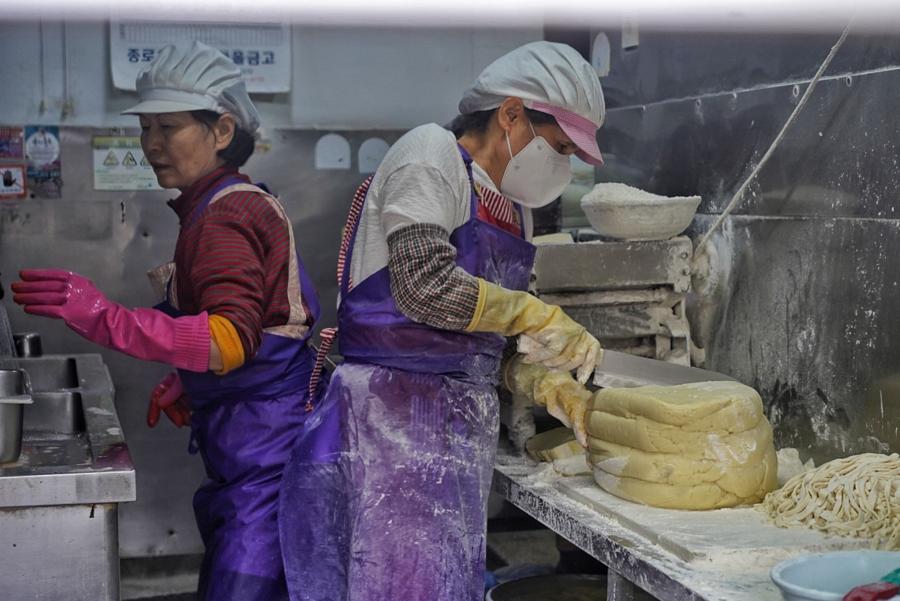
Where to get it:
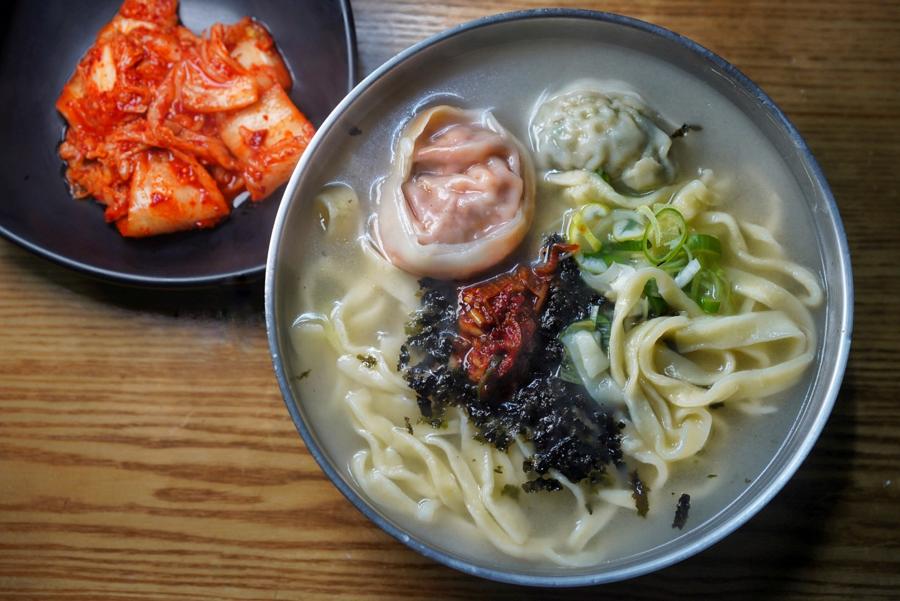
Jongno Halmeoni Kalguksu
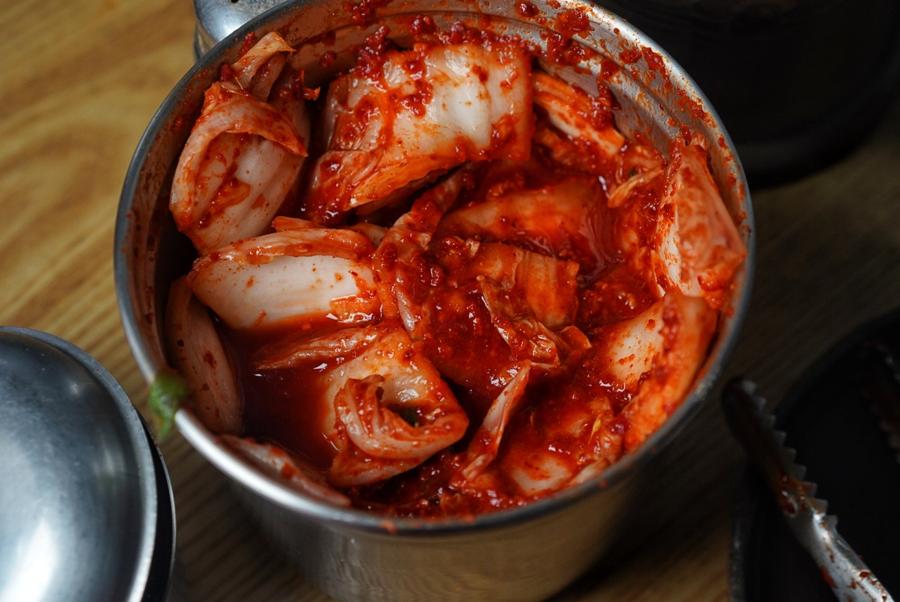
Jongno Halmeoni Kalguksu's kimchi
Jongno Halmeoni Kalguksu: A simple, rustic eatery with an emphasis on local flavors, serving dishes like kalguksu, sujebi (wide flat noodles) and mandu in a rich anchovy broth for just 10-12,000 won a bowl. Mostly filled with locals, this shop provides a veritable look into Korea's authentic food culture. Pro tip: The free flow kimchi on the table is some of the tastiest in all of Korea.
14-2 Donhwamun-ro 11da-gil, Jongno District, Seoul
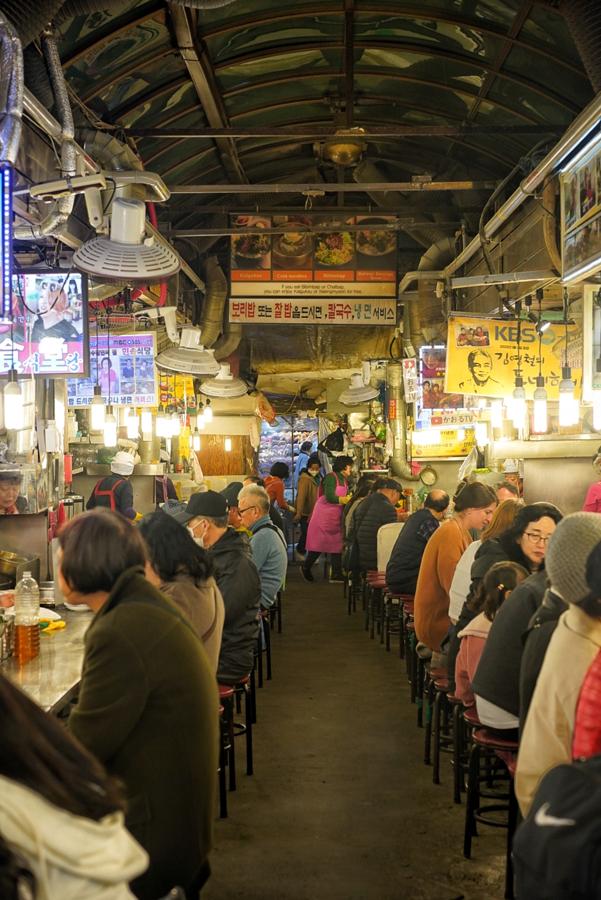
Namdaemun Kalguksu Alley
Namdaemun Kalguksu Alley: This narrow alley in Namdaemun Market is filled with dozens of small stalls, often run by elderly women, that serve the same basic menu of kalguksu, along with other dishes like cold buckwheat noodles and steamed barley rice. It offers an authentic Korean food experience, with generous portions and a buzzing atmosphere, though it can be crowded, especially at meal times.
42-1 Namdaemunsijang 4-gil, Jung District, Seoul
Similar to beef tartare, yukhoe is made from thinly sliced, high-quality beef marinated in soy sauce, sesame oil, garlic, and pear mixture and typically served with a raw egg yolk. Yukhoe is considered a delicacy, enjoyed on its own, topped with raw octopus, as a side dish, or sometimes as an ingredient in other dishes like bibimbap.
Where to get it:
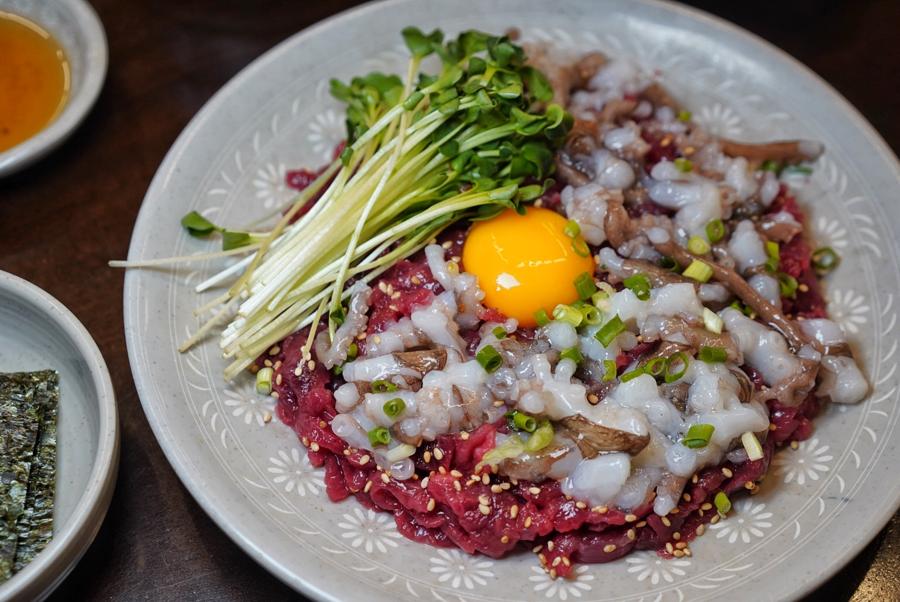
Yukhoe Jamaejip Head Store's yukhoe san-nakji
Yukhoe Jamaejip Head Store: Situated in Seoul's Gwangjang Market, this busy restaurant is notable for its raw beef dishes like yukhoe (beef tartare) with still squiggling raw octopus (san-nakji), yukhoe bibimbap, and yukjeon (beef pancakes). It’s common to have a wait due to its popularity, so go early and put your name down.
177 Jongno 4-ga, Jongno-gu, Seoul
This Korean soup is made with a whole young chicken stuffed with glutinous rice, ginseng, jujubes, and garlic, and then simmered in a clear broth. It is considered a nutritious and energizing dish, traditionally eaten on hot summer days to combat fatigue and "fight heat with heat" ("iyeolchiyeol").
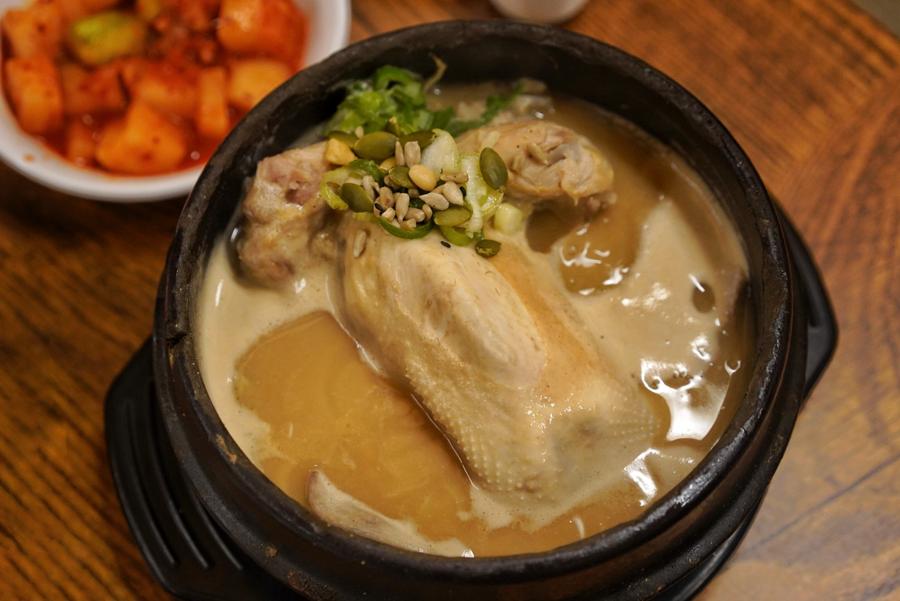
Tosokchon
Where to get it:
Tosokchon: The poster child for samgyetang, this restaurant is housed in a renovated hanok building, and appreciated by both locals and tourists.
5 Jahamun-ro 5-gil, Jongno District, Seoul
Namyeong Chicken: A modern stuffed and roasted chicken shop (not samgyetang, but still showcasing rice-stuffed chicken) that combines elements of Korean, Cantonese, Southeast Asian, and South American culinary heritages, roasted chicken here comes in all manner of flavor profiles, like Oriental chicken stuffed with chorizo sticky rice and mala black vinegar sauce, Ppenking chicken with cheddar and lime chili sauce, and Western chicken with mushroom spinach bacon stuffing.
12, Hangang-daero 80-gil, Yongsan-gu, Seoul
A warming soup made from long-simmered beef bones, marked by its milky-white broth. Often prepared with cuts like brisket, shank, or oxtail, gomtang is usually served with rice and/or noodles, garnished with green onions.
Where to get it:
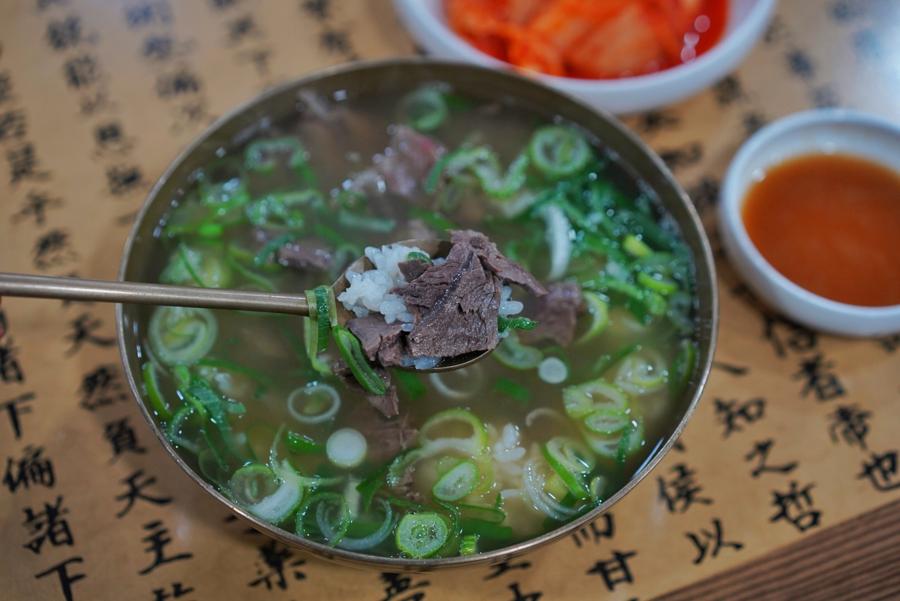
Ido Gomtang
Ido Gomtang: Based on the name, it’s clear that this friendly soup shop that’s been passed down through three generations specializes in the eponymous gomtang soup, laden with fat-pleated brisket swimming in a rice soup, ideal for winter.
671-17 Yeoksam-dong, Gangnam District, Seoul
Jjukkumi Bokkeum is a stir-fried small, tender octopus (jjukkumi) dish tossed with a gochujang and vegetables. Fiery and filling, this dish is best finished by mixing with crispy rice on a hot plate.
Where to get it:
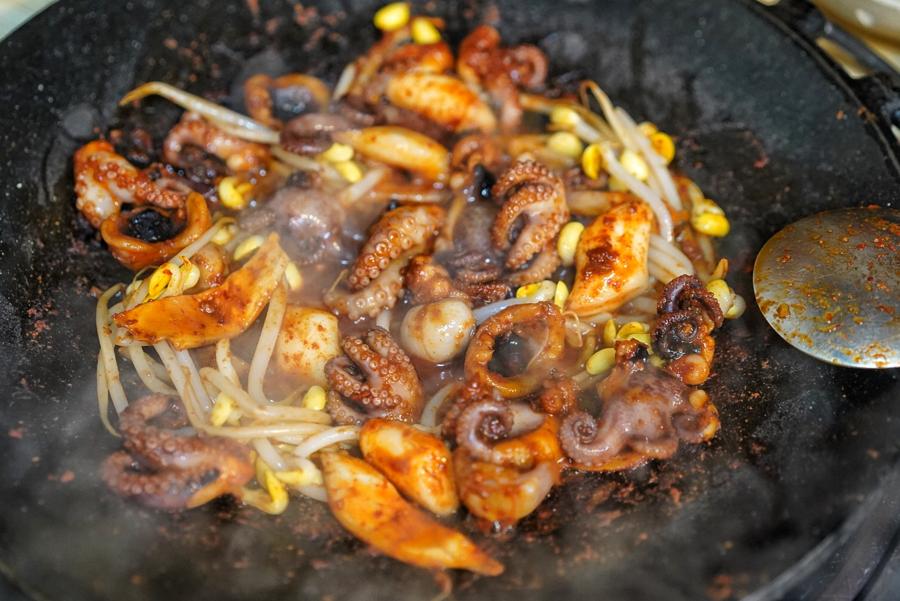
Imo’s Small Octopus Main Branch
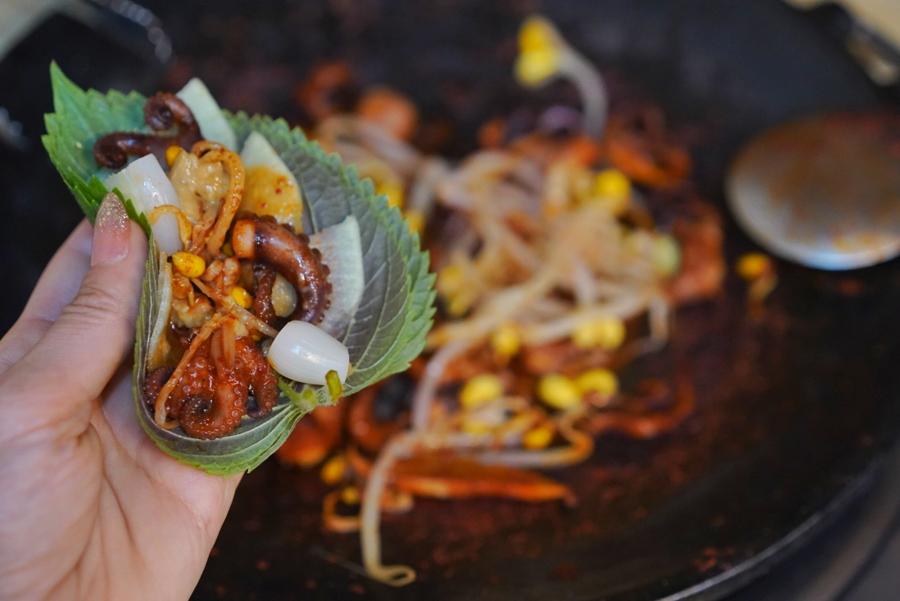
Imo’s Small Octopus Main Branch
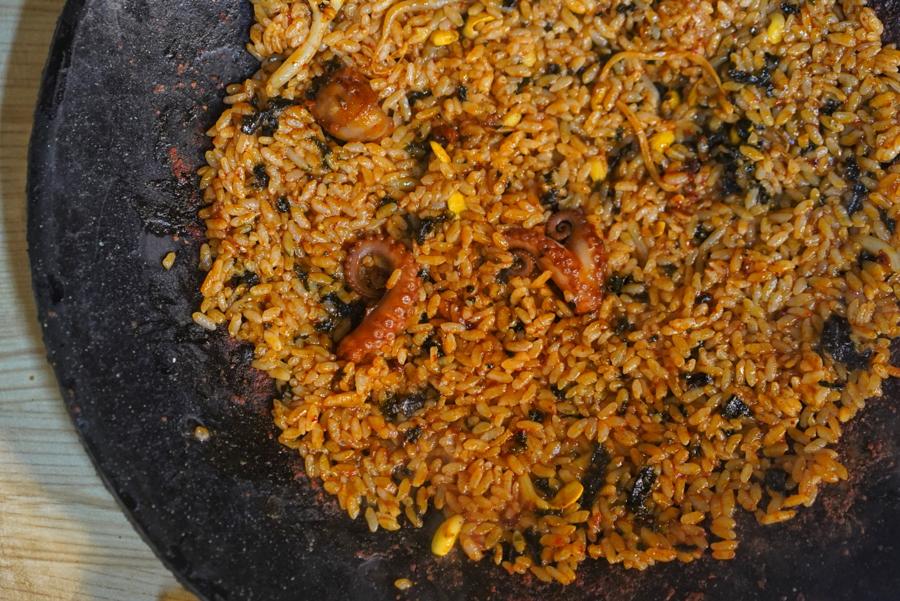
Imo’s Small Octopus Main Branch
Imo’s Small Octopus Main Branch: This friendly eatery specializes in jjukumi sets starting at 12,000 won, including gochujang-slathered web octopus, bean sprouts, rice cakes, greens and herbs, pickled daikon, kimchi and rice. Pro tip: Make sure to save a little bit of the mixture for the end and the team will stir fry it with rice and seaweed for a satisfying finale.
119-4 Yongdu-dong Dongdaemun-gu, Seoul
Grandma Na Jeong Sun's Jjukkumi: Located on the same street, this internet famous shop serves the same style of stir-fried octopus, for a minimum of two people, starting at 10,000 won per person.
144 Muhak-ro, Yongdu-dong, Dongdaemun District, Seoul
Made from finely shaved ice, often frozen milk, this cold dessert is studded with all manner of sweet toppings, such as red bean paste, fruit, condensed milk, and ice cream. It originated in the Joseon Dynasty and has evolved from a royal treat to a modern, widely enjoyed dessert enjoyed year-round by many.
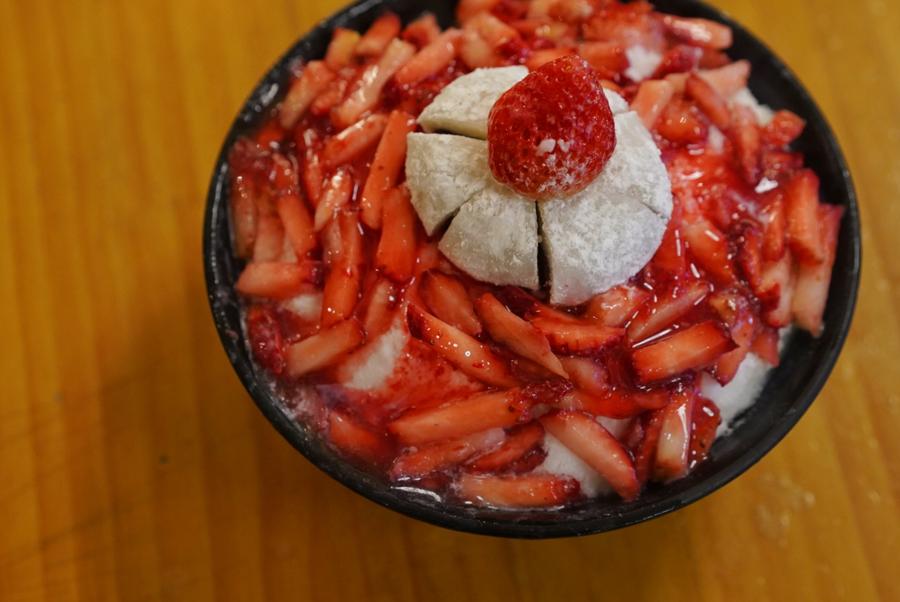
Sulbing's strawberry bingsu
Where to get it:
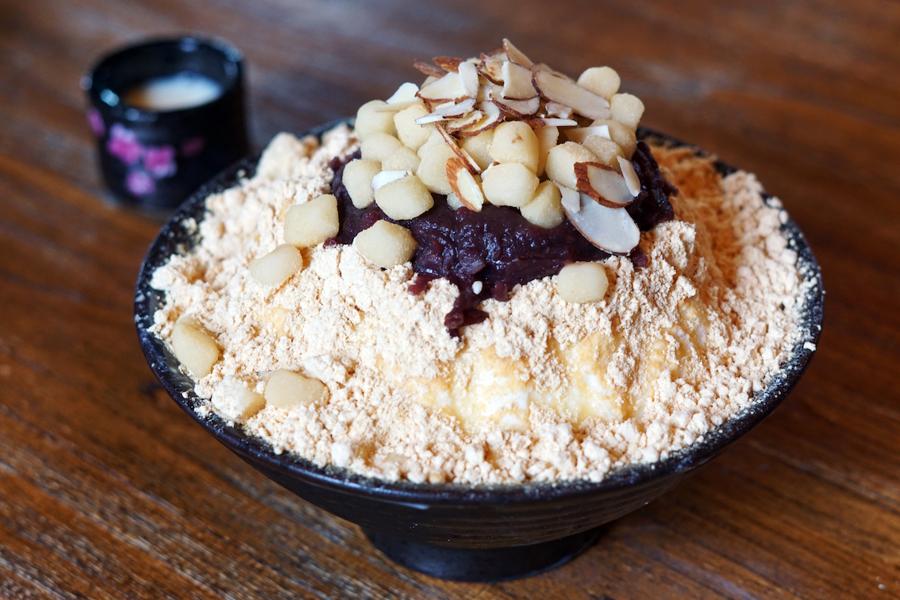
Sulbing's injeolmi bingsu
Sulbing: A South Korean dessert chain, Sulbing is known for its signature bingsu available in seasonal flavors like strawberry, mango, matcha, and injeolmi (soybean powder), among many others. This café has since expanded with nearly 500 locations across Asia and Australia.
27 Myeongdong 3-gil, Jung District, Seoul
Okrumong: This dessert café doles out authentic patbingsu (shaved ice with red beans), using traditional methods, like boiling the red bean in a cauldron to make the sweet paste, and presenting desserts in traditional bronze bowls.
18 Yeondaedongmun-gil, Seodaemun-gu, Seoul
This 24-48 marinated raw crab dish comes in two main varieties: ganjang gejang (marinated in a soy-based sauce) and yangnyeom gejang (made with a spicy, gochujang-based marinade). The resulting crab meat is succulent and tender, full of umami flavor.
Where to get it:
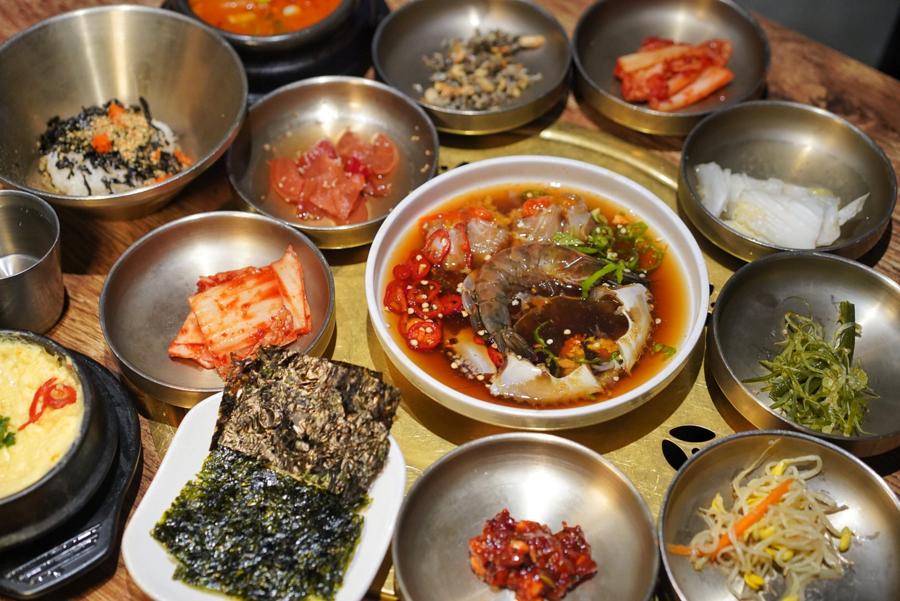
Odarijip Ganjang Gejang
Odarijip Ganjang Gejang: This marinated crab and shrimp restaurant highlights the soy-sauce marinated version of gejang, accompanied by an overflowing table of kimchi soup, steamed egg, rice, and nearly a dozen banchan for 30,000 won per person.
2F, 28 Myeongdong 8na-gil, Jung District, Seoul
Seoul's street food scene is a cultural experience offering both savory and sweet snacks, from the spicy rice cakes of tteokbokki to the sweet, pan-fried pancakes called hotteok. Common locations include markets like Gwangjang and Namdaemun, where locals and visitors gather to eat, socialize, and enjoy affordable, traditional, and modern dishes.
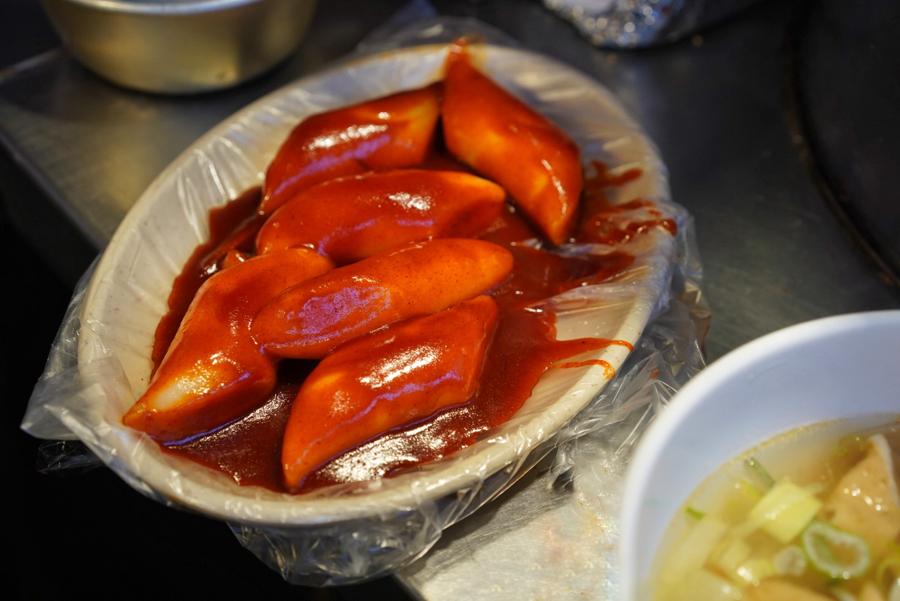
Tteokbokki
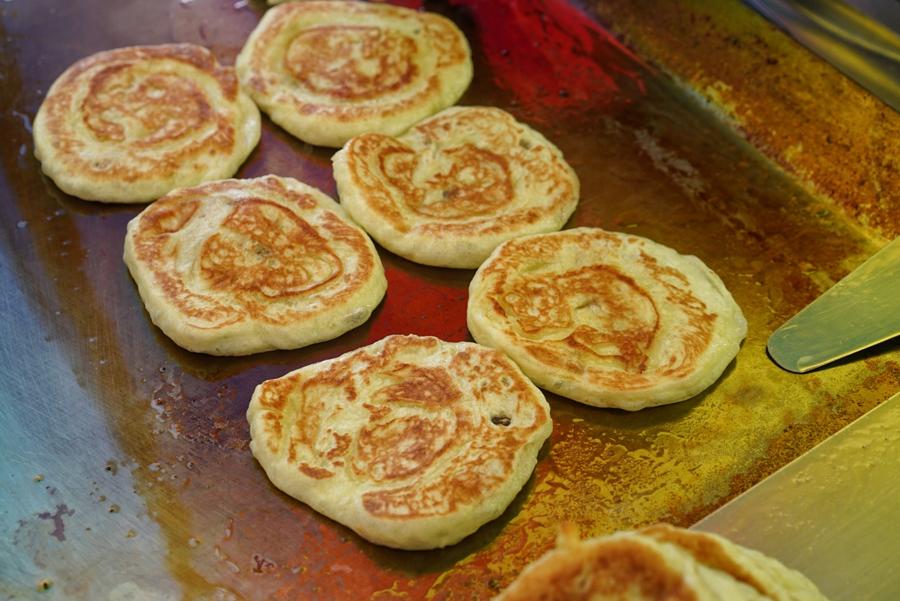
Hotteok
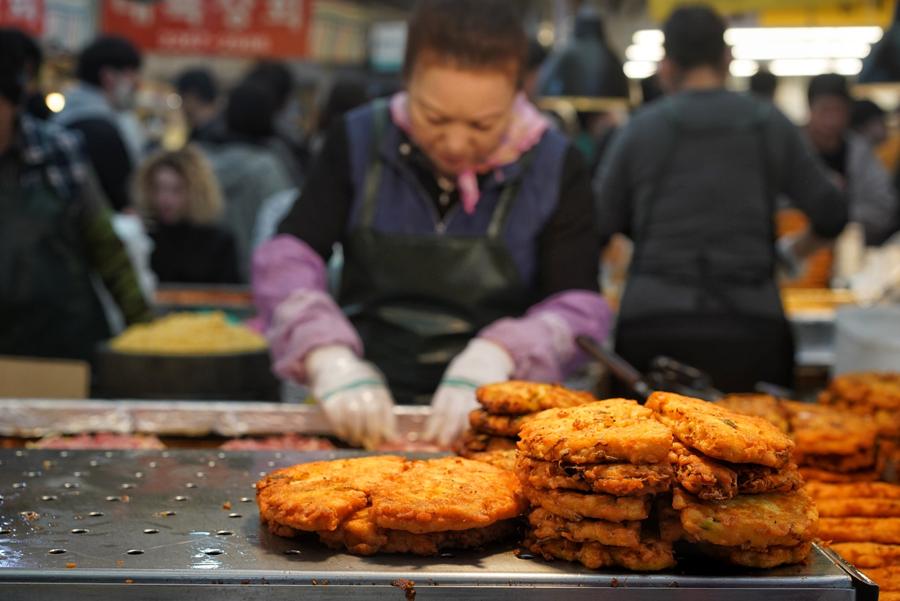
Bindaetteok
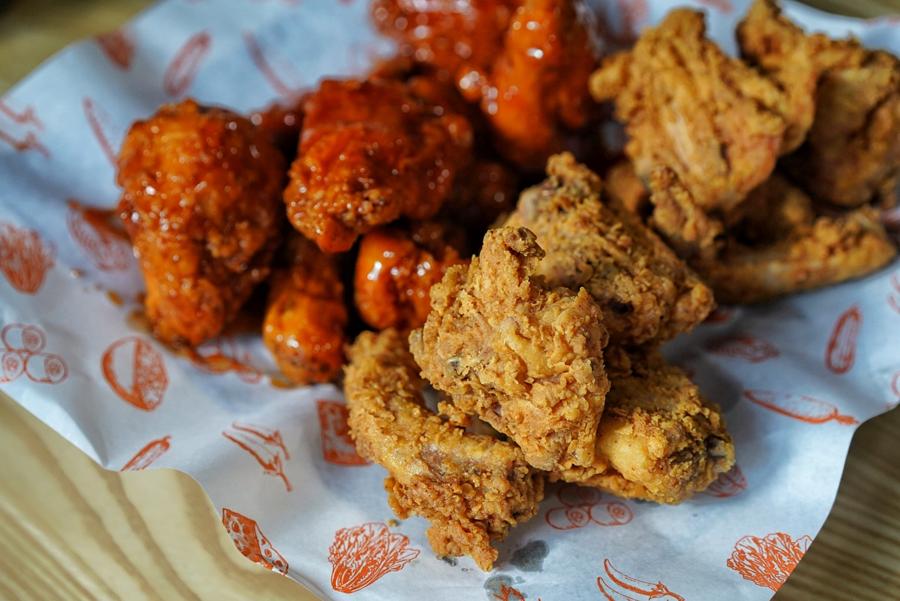
Korean fried chicken
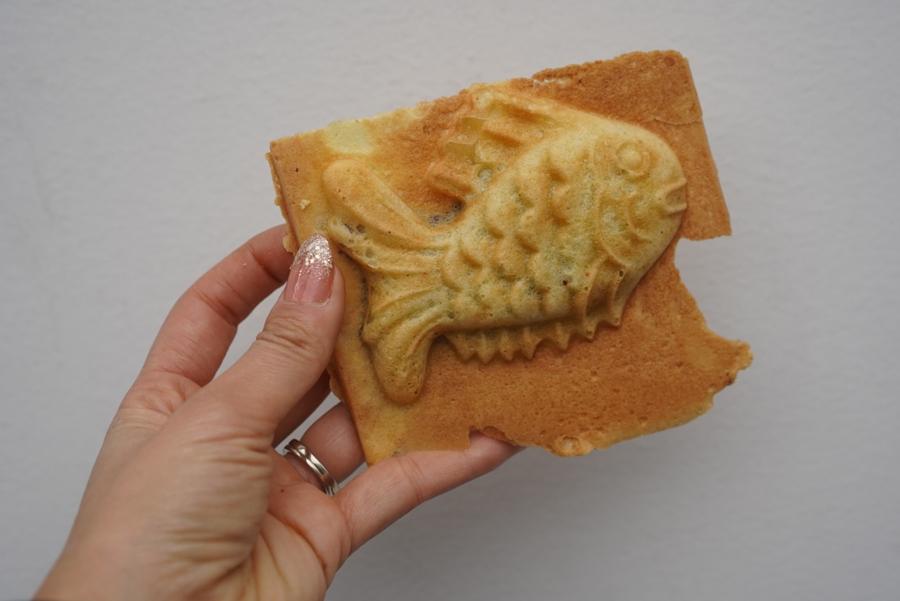
Bungeoppang
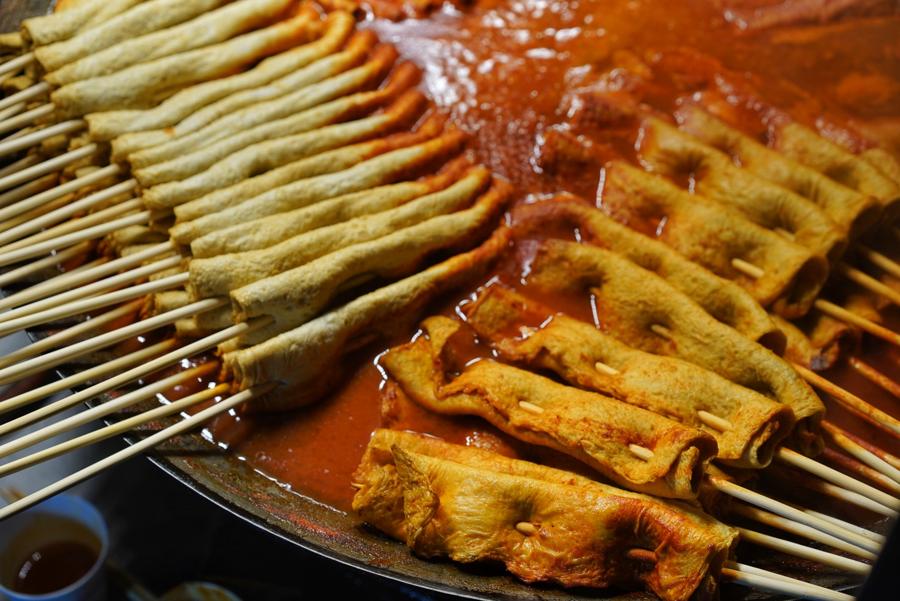
Fish Cakes
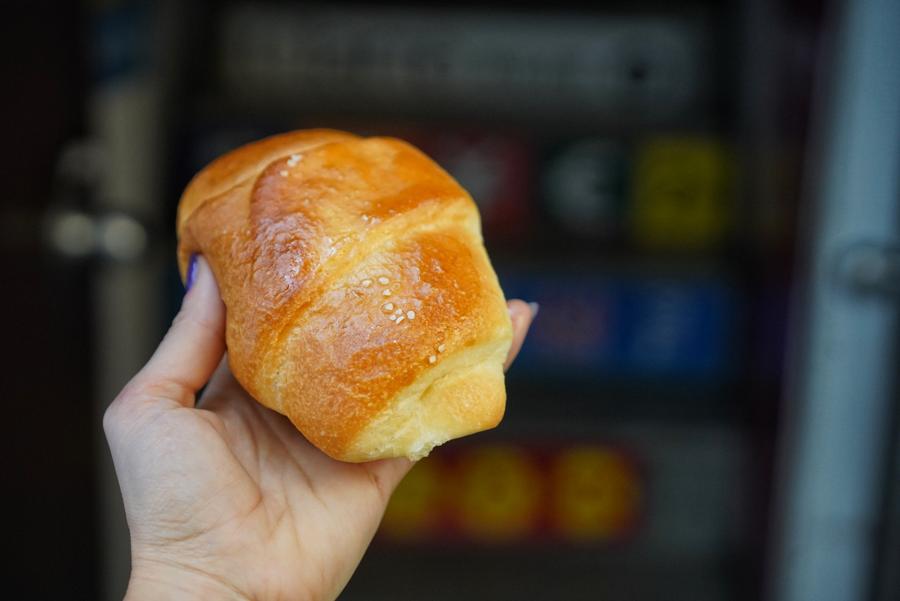
Salt Bread
Donuts, bagels, and bread shops of all kinds are trending in Seoul these days, from fluffy cream-filled pastries to chewy cinnamon twists. Many of these donut shops are destinations onto themselves, with stylish settings and a wide spectrum of treats beyond classic donuts.
Where to get it:
Knotted: A favored Korean brand famous for its cream-filled donuts and playful designs, Knotted has numerous locations across the city.
5 Dosan-daero 53-gil, Gangnam District, Seoul
Abebe Bakery: Originating on Jeju Island, this hip bakery sees plush, cream-filled donuts in fun, Asian-leaning flavors like black sesame and matcha. The brand has since expanded to Seoul and Tokyo.
201 Cheonggyecheon-ro, Jongno District, Seoul
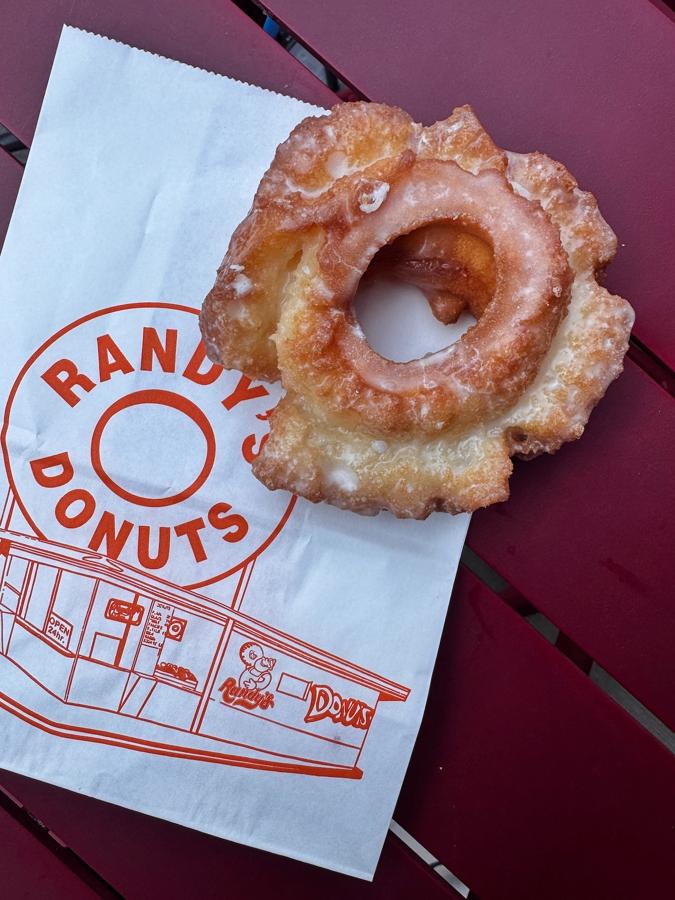
Randy's Donuts
Randy’s Donuts: This American donut chain sees classic to creative donuts, with options from typical old fashioned glazed (the best rendition in the city) to green onion, and everything in between.
247 Donggyo-ro, Mapo-gu, Seoul
Queensberry Donut Shop: The Australian-style artisan donuts here are small yet dense, served in a setting reminiscent of a Sydney café.
377-43 Sindang-dong, Jung-gu, Seoul
Overte: This vegan donut shop delivers on flavor with options like Earl Grey, Raspberry & Pistachio, and Hazelnut Ganache.
34 Toegye-ro 10-gil, Jung District, Seoul
Seoul's cocktail scene is characterized by creative, high-quality drinks and a strong sense of community. From bars in hanoks to those with storytelling-based menus, often incorporating local ingredients and Korean spirits into their cocktails, the bar industry is recognized globally for its collaborative atmosphere, where guest shifts and bar hopping are common, and connection between drinks and food.
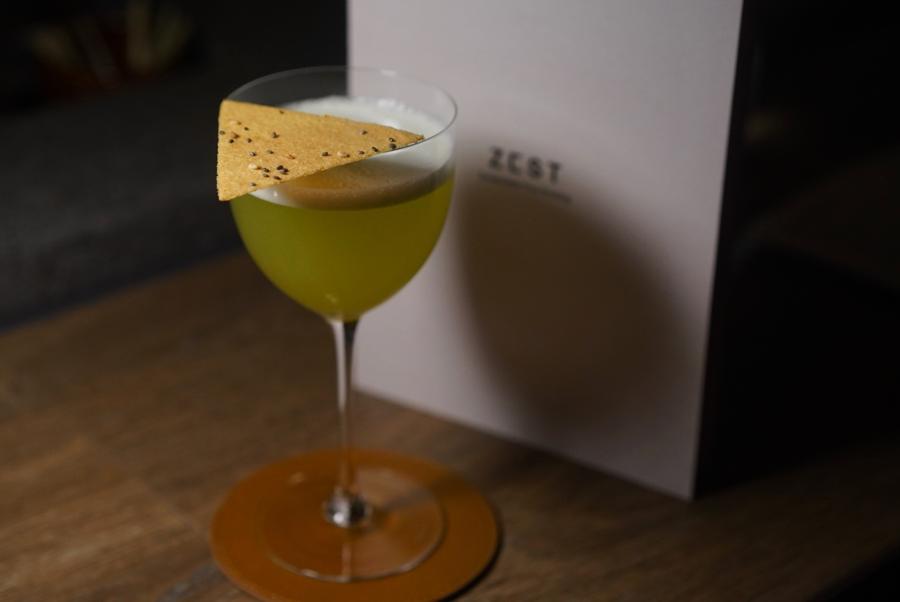
Zest
Zest: Ranked No. 2 on Asia’s 50 Best Bars 2025 list (and the No. 16 bar in the world), and for good reason, Zest excels at serving up sustainably focused sippers in an invitingly intimate space.
6 Dosan-daero 55-gil, 1st floor, Gangnam-gu, Seoul
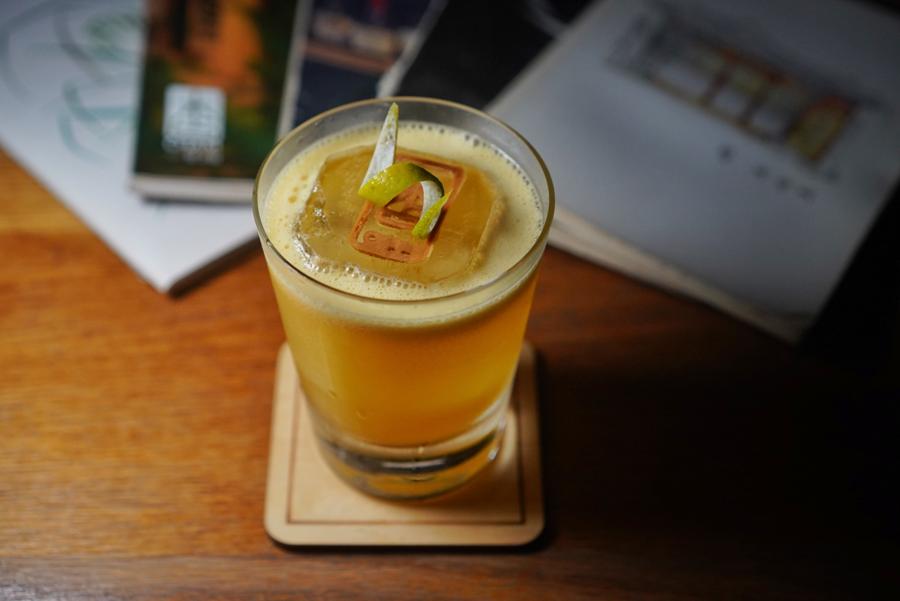
Bar Cham: Celebrated for its innovative mixology with a nod to heritage Korean spirits, Bar Cham showcases local ingredients in sippable form.
34 Jahamun-ro 7-gil, Jongno District, Seoul
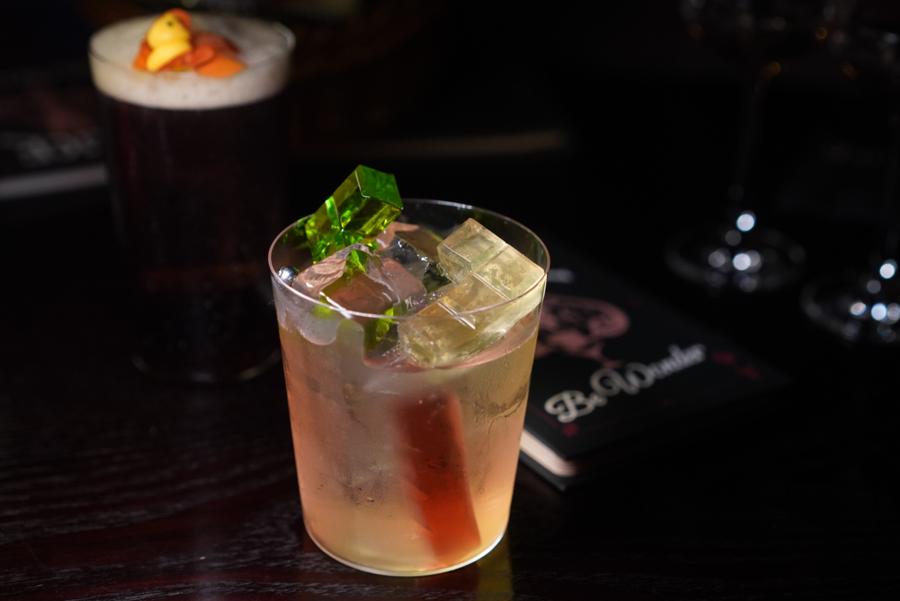
Alice
Alice: In the whimsical world of Alice, each cocktail tells a story, and the fantastical décor adds to the immersive experience.
B1F, 47, Dosan-daero 55-gil, Gangnam-gu, Seoul
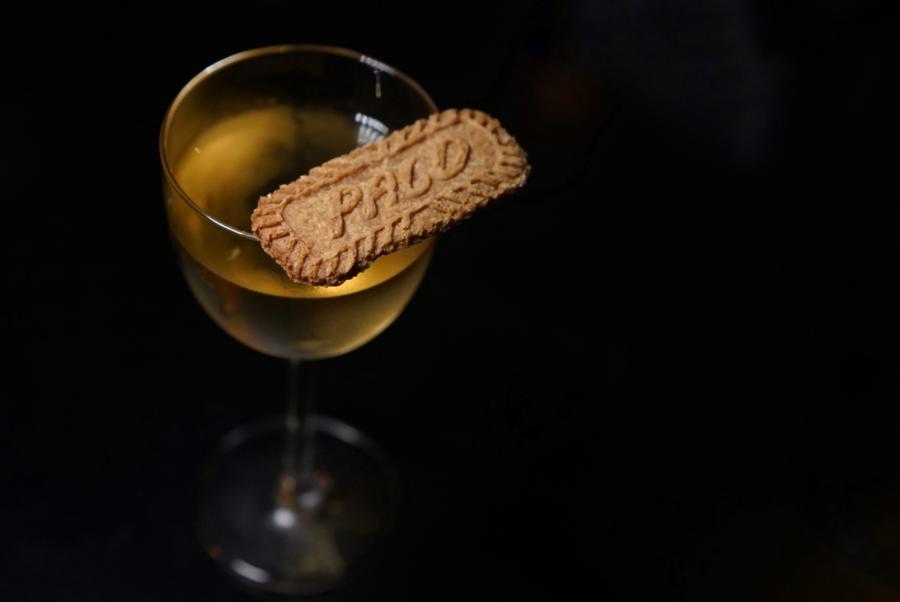
Pine & Co
Pine & Co: Down a back-alley stairwell sits Pine & Co., a speakeasy with spunk. Crowned as No. 52 on Asia’s 50 Best Bars 2025 list, Pine & Co pours out experimental twists on classics. Don’t miss the homemade boozy ice cream!
B1, 33, Seolleung-ro 157-gil, Gangnam-gu, Seoul
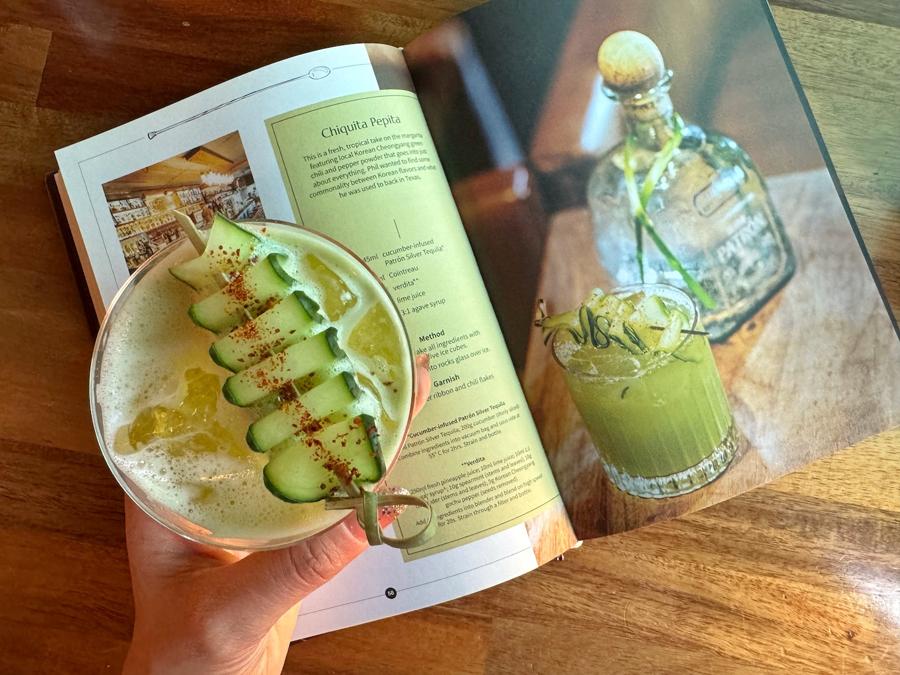
Southside Parlor
Southside Parlor: This Texas-inspired watering hole and restaurant serves Southern-style food and craft cocktails to match in a relaxed atmosphere.
218 Noksapyeong-daero, Yongsan District, Seoul
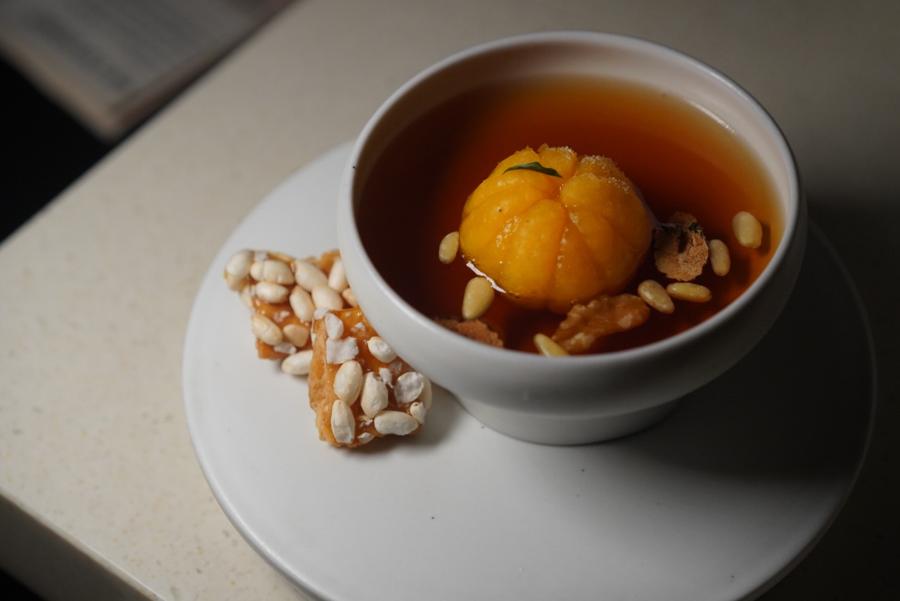
Cricket
Cricket: Paying homage to Korean-born spirits, Cricket offers one of the widest arrays of boutique soju, makgeolli, and cheongju, plus cocktails that focus on niche Korean tastes, all against a nature-inspired backdrop.
1F, 646-15, Sinsa-dong, Gangnam-gu, Seoul
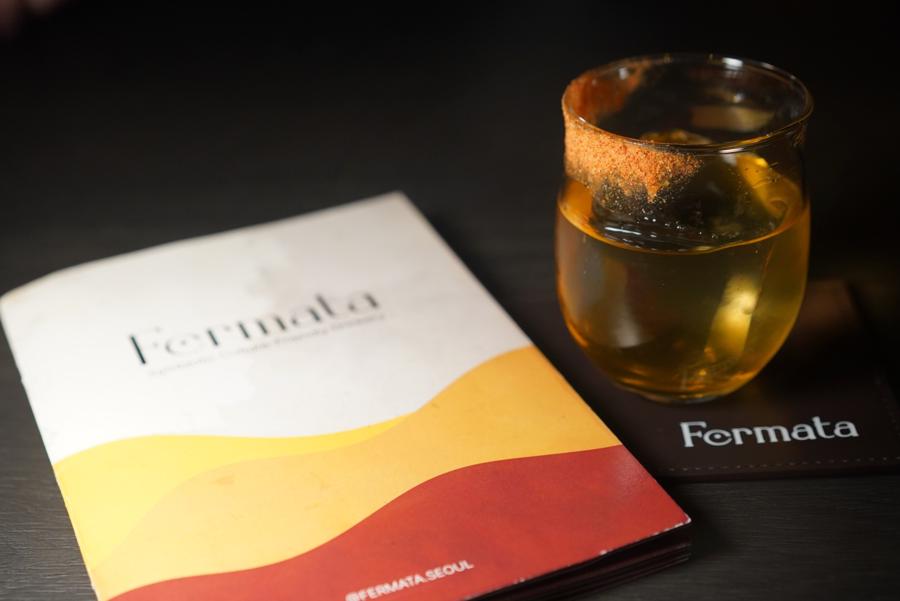
Fermata
Fermata: Dubbed a “symbiotic culture-friendly drinkery,” Fermata spotlights all things fermented.
85-7, Cheongdam-dong, Gangnam-gu, Seoul
Charles H: A glam speakeasy in the basement of the Four Seasons Hotel Seoul, the menu is inspired by Charles H. Baker Jr.’s travels.
97 Saemunan-ro, Jongno District, Seoul
Village Records: Expect molecular cocktails paired with classic styles in a cozy, fine drinking setting below a furniture store.
B2F, 18, Dosandaero-15gil, Gangnam-gu, Seoul
Le Chamber: A high-end speakeasy hidden behind a bookshelf featuring expert mixology and an extensive whiskey collection amongst upscale décor.
42, Dosan-daero 55-gil, Gangnam-gu, Seoul
Bar Soko: A bar inspired by 1920s drinking culture that combines both East and West elements, this premier drinking destination is frequented by Seoul’s socialites.
B1F, 47 Hannam-daero 20-gil, Yongsan-gu, Seoul
7.8 Makgeolli: This trendy bar hones in on makgeolli, a traditional Korean rice wine.
22-7 Changgyeonggung-ro 8-gil, Jugyo-dong, Jung District, Seoul
Sinsajeon: A makgeolli bar and restaurant, this venue kickstarted the honeycomb makgeolli craze where actual honeycomb is placed in homemade makgeolli carafes. Wash it down with any of their jeon pancakes on offer.
18 Dosan-daero 11-gil, Gangnam District, Seoul
READ MORE: The Complete Busan City Guide for First Time Visitors

My name is Sophie Steiner, and welcome to my food-focused travel blog. This is a place to discover where and what to eat, drink, and do in Shanghai, Asia, and beyond. As an American based in Shanghai since 2015 as a food, beverage, travel, and lifestyle writer, I bring you the latest news on all things food and travel.
Your email address will not be published.
Be the first to comment!